

Zitierweise / cite as:
Payer, Alois <1944 - >: Chronik Thailands = กาลานุกรมสยามประเทศไทย. -- Chronik 1996 / B. E. 2539. -- 2. datiert. -- Fassung vom 2017-03-20. -- URL: http://www.payer.de/thailandchronik/chronik1996b.htm
Erstmals publiziert: 2012-10-23
Überarbeitungen: 2017-03-20 [Ergänzungen] ; 2017-01-04 [Ergänzungen] ; 2016-12-23 [Ergänzungen] ; 2016-11-04 [Ergänzungen] ; 2016-08-31 [Ergänzungen] ; 2016-05-13 [Ergänzungen] ; 2016-04-18 [Ergänzungen] ; 2016-03-23 [Ergänzungen] ; 2016-02-02 [Ergänzungen] ; 2016-01-19 [Ergänzungen] ; 2015-09-12 [Ergänzungen] ; 2015-06-07 [Ergänzungen] ; 2015-04-26 [Ergänzungen] ; 2015-04-18 [Ergänzungen] ; 2014-11-10 [Ergänzungen] ; 2014-10-09 [Ergänzungen] ; 2014-09-23 [Ergänzungen] ; 2014-09-12 [Ergänzungen] ; 2014-08-27 [Ergänzungen] ; 2014-08-18 [Ergänzungen] ; 2013-11-18 [Ergänzungen] ; 2013-10-04 [Ergänzungen] ; 2013-09-26 [Ergänzungen] ; 2013-09-01 [Ergänzungen] ; 2013-06-04 [Ergänzungen] ; 2013-05-24 [Ergänzungen] ; 2013-04-26 [Ergänzungen] ; 2013-04-26 [Ergänzungen] ; 2013-04-21 [Ergänzungen] ; 2013-04-16 [Ergänzungen] ; 2013-04-08 [Ergänzungen] ; 2013-03-19 [Ergänzungen] ; 2013-01-26 [Ergänzungen] ; 2013-01-13 [Ergänzungen]
©opyright: Dieser Text steht der Allgemeinheit zur Verfügung. Eine Verwertung in Publikationen, die über übliche Zitate hinausgeht, bedarf der ausdrücklichen Genehmigung des Herausgebers.
Dieser Text ist Teil der Abteilung
Thailand von
Tüpfli's Global Village Library
ช้างตายทั้งตัวเอาใบบัวปิดไม่มิด
|
Gewidmet meiner lieben Frau Margarete Payer die seit unserem ersten Besuch in Thailand 1974 mit mir die Liebe zu den und die Sorge um die Bewohner Thailands teilt. |
|
Bei thailändischen Statistiken muss man mit allen Fehlerquellen rechnen, die in folgendem Werk beschrieben sind:
Die Statistikdiagramme geben also meistens eher qualitative als korrekte quantitative Beziehungen wieder.
|
1996-01-01

Inkrafttreten des Agreement on Trade Related Aspects of Intellectual Property Rights (TRIPS). Thailand ist Mitglied.
1996-01-07

Tod des Thaiisten Benjamin Batson (geb. 1942)
"Benjamin Batson (1942-1996) was an American mathematician and historian who studied 20th century Thai history. He spent almost his entire professional life in Southeast Asia. Biography
Batson was born in Tennessee in 1942. Batson earned a bachelor's degree in mathematics in 1963 at Harvard University- where he was elected to membership of Phi Beta Kappa. He briefly returned Tennessee to work at the Oak Ridge National Laboratory. He then moved to Thailand, teaching mathematics at Chulalongkorn University (จุฬาลงกรณ์มหาวิทยาลัย) from 1964-66. After completing a master's degree under Walter Vella (1924 - 1980) at the University of Hawaii in 1968, he returned to Thailand to teach mathematics at Chiang Mai University (มหาวิทยาลัยเชียงใหม่) in the north of the country. He received grants from the East-West Center, NDFL Act (Title IV), the Ford Foundation, and the Social Science Research Council. While there he developed an interest in Thai history.
History career and publicationsIn 1969 he entered the Southeast Asia Program graduate program at Cornell University, where his thesis on the end of Thailand's absolute monarchy and transition to a constitutional monarchy was supervised by David K. Wyatt (1937 - 2006). While at Cornell Batson attracted the attention of Walter LaFeber (1933 - ), the eminent historian of American foreign policy, whom he served under as a teaching assistant. Sifting through neglected files at the National Archives (หอจดหมายเหตุแห่งชาติ) in Bangkok, Batson uncovered a long lost collection of papers in which the concept of democracy in Thailand was debated between the seventh Bangkok king and his ministers and advisers. He translated a selection of these and published them as Siam's Political Future: Documents from the End of the Absolute Monarchy in 1974. He was a research fellow at the Australian National University in the late 1970s, during which time he revised his dissertation for publication as The End of the Absolute Monarchy in Siam by the Oxford University Press in 1984. He wrote a work on the Thai literary figure and political activist, Kulap Saipradit (กุหลาบ สายประดิษฐ์, 1905 -1974). He also began studying Japanese-Thai relations with Shimizu Hajime inspired Southeast Asia under Japanese Occupation and The Tragedy of Wanit: A Japanese Account of Wartime Thai Politics in 1980 and 1990, respectively.
Batson's last published piece, published in the Journal of Southeast Asian Studies, in March 1996, discussed Phra Sarasas, a figure who positioned himself as power-broker between the Japanese and Thai governments during the leadup to World War II.
Batson died unexpectedly of heart disease in Singapore on Sunday, January 7, 1996 at the age of 53."
[Quelle: http://en.wikipedia.org/wiki/Benjamin_Batson. -- Zugriff am 2013-04-29]
1996-01-08
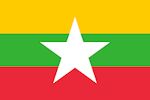
Drogenkönig Khun Sa (ခွန်ဆာ, จันทร์ จางตระกูล, 1934 - 2007) und seine Muang Tai Army (MTA, กองทัพเมิงไต) ergeben sich der birmanischen Regierung.
Abb.: Khun Sa (ခွန်ဆာ, จันทร์ จางตระกูล, 張奇夫), 1988
[Bildquelle: Stephen Rice / Wikipedia. -- GNU FDLIcense]
"Chang Shi-Fu alias Khun Sa (ခွန်ဆာ, chinesischer Name 張奇夫, Chang Shi-fu, Thai: จันทร์ จางตระกูล, Chan Jangtrakul,* 17. Februar 1933; † 26. Oktober 2007 in Rangun - ရန်ကုန်) war ein ehemaliger Politiker, Rebellenführer und der Gründer der Shan United Army und der Muang Tai Army, auch Mong Tai Army (MTA, กองทัพเมิงไต) genannt, in Myanmar, dem ehemaligen Birma. In seinen „Glanzzeiten“ Anfang der 1990er-Jahre galt er als der größte Heroinschmuggler aller Zeiten und verfügte über eine eigene Armee mit 10.000 Mann. Khun Sas Vater war chinesischer Herkunft, seine Mutter entstammte einer adligen Shan-Familie (တႆး). In seiner Jugend kämpfte er auf Seiten der nationalchinesischen Kuomintang (中國國民黨), gründete aber später seine eigene, ein paar hundert Mitglieder umfassende Miliz, die Shan United Army. 1963 unterstellte er seine Miliz dem Ka Kwe Ye, einem Programm von General Ne Win (နေဝင်), dem damaligen Premierminister von Birma, welches die Bildung von lokalen Milizen förderte, die die Militärregierung im Kampf gegen die Shan-Rebellen unterstützen sollte. Khun Sa erhielt Geld, Waffen und Uniformen von der Militärregierung. Nachdem seine Einheit auf 800 Mann angestiegen war, entzog er dem birmanischen Militär seine Unterstützung, besetzte Gebiete im Shan-Staat (ရ္ဟမ္းပ္ရည္နယ္) und im Wa-Staat (佤邦) und nahm die Produktion von Opium auf. 1967 war er mit seiner Privatarmee in Kämpfe mit Teilen der Kuomintang verwickelt. Nach mehreren entscheidenden Niederlagen war seine Armee fast am Ende. 1969 wurde er vom birmanischen Militär verhaftet. Nach der gelungenen Geiselnahme zweier russischer Doktoren, durchgeführt von seinem Stellvertreter, kam er 1973 in Freiheit. 1976 war er wieder aktiv im Drogenschmuggel und in der Drogenproduktion in seinem neuen Hauptquartier an der thailändisch-birmanischen Grenze in Ban Hin Taek (ที่บ้านหินแตก) in der Nähe von Mae Salong (แม่สลอง, jetzt: Santikhiri - สันติคีรี) in der thailändischen Provinz Chiang Rai (เชียงราย). Seine Armee führte parallel einen bewaffneten Kampf für größere Autonomie des Shan-Volks gegen die birmanische Militärregierung und gegen seine Todfeinde, die Milizen der United Wa State Army (ဝပြည် သွေးစည်းရေး တပ်မတော်). 1982 wurde Khun Sa nach dreitägigen heftigen Kämpfen von der thailändischen Armee aus Ban Hin Taek vertrieben. 1985 gründete er mit anderen Shan-Rebellen die Muang Tai Army. Sein neues Hauptquartier legte er in das in den Bergen nördlich der thailändischen Provinz Mae Hong Son (แม่ฮองสอน) gelegene Homong.
1989 wurde Khun Sa wegen der illegalen Einfuhr von 1000 Tonnen Heroin in die USA in Abwesenheit angeklagt. Khun Sa bot daraufhin der US-Regierung seine ganze Heroinproduktion zum Kauf an. Die Shan seien von der Heroinproduktion abhängig, wäre dies doch die einzige Möglichkeit, ihren Kampf gegen die birmanische Militärdiktatur zu finanzieren.
1994 führte die amerikanische Drug Enforcement Administration (DEA) die sogenannte „Operation Tiger Trap“ durch. Am 27. November 1994 wurden Anhänger von Khun Sa auf thailändischem Boden von thailändischen Sicherheitsorganisationen und der DEA verhaftet und ihre Vermögenswerte beschlagnahmt. 13 Verdächtigte wurden später an die USA ausgeliefert. Nach einer Rebellion innerhalb der Mong Tai Army im Jahre 1996 musste sich Khun Sa dem myanmarischen Militär ergeben. Trotz eines Kopfgelds der USA in Höhe von zwei Millionen Dollar durch die DEA wurde Khun Sa nicht an die USA ausgeliefert.
Die Gebiete der ehemaligen MTA wurden von der United Wa State Army und der Shan State Army-South (ရှမ်းပြည် တပ်မတော် (တောင်ပိုင်း)) übernommen. Bis zu seinem Tod lebte Khun Sa als erfolgreicher Geschäftsmann in der ehemaligen myanmarischen Hauptstadt Yangon (ရန်ကုန်). Er starb am 26. Oktober 2007 in Rangun. Die Todesursache ist nicht bekannt. Er litt an Diabetes und Bluthochdruck und war teilweise gelähmt."
[Quelle: http://de.wikipedia.org/wiki/Khun_Sa. -- Zugriff am 2011-12-21]
Abb.: Flagge der Muang Tai Army (MTA, กองทัพเมิงไต)
[Bildquelle: Wikipedia. -- Public domain]
"Die Muang Tai Army (กองทัพเมิงไต), auch Mong Tai Army geschrieben, ist eine ehemalige Widerstandsbewegung der Shan-Minderheit (တႆး) in Myanmar (Birma). Die Shan-Bedeutung von "Tai" ist "frei", "Muang" kann mit "Staat" übersetzt werden. Die Muang Tai Army galt mit bis zu 20.000 bewaffneten Anhängern als eine der größten Bewegungen, die die Zentralregierung Myanmars bekämpften. Sie wurde häufig mit der Produktion und dem Vertrieb von Drogen in Verbindung gebracht, besonders Opium und Heroin. Geschichte
Die Geschichte der Muang Tai Army wurde im Wesentlichen von dem Shan-Chinesen Chang Shi Fu (張奇夫), besser bekannt unter dem Namen Khun Sa (ခွန်ဆာ), beeinflusst.
Die Muang Tai Army entstand durch einen Zusammenschluss der 1965 von Khun Sa gegründeten Shan United Army und der Tai Revolutionary Army im Jahre 1985. Diese wiederum war aus einem Zusammenschluss der Shan United Revolutionary Army unter Führung von Mo Heing (alias Korn Jerng) mit Teilen der Shan State Army im Jahre 1982 hervorgegangen.
Das Hauptquartier der Muang Tai Army befand sich in Ho Mong gegenüber der thailändischen Provinz Mae Hong Son (แม่ฮองสอน).
Am 7. Juli 1995 brach eine Rebellion in der Muang Tai Army aus, und 8000 Kämpfer unter Führung von Oberst Kan Yod und Dae Wain zogen sich in den Ort Hsipaw (သီႇပေႃႉ) zurück, wo sie einen neuen Stützpunkt errichteten. Sie nannten sich Shan State National Army. Die Gruppe beabsichtigte Waffenstillstandsverhandlungen mit der myanmarischen Militärregierung zu führen. Khun Sa behauptete, es sei zu den Problemen gekommen, weil Soldaten nicht unter einem Halbchinesen wie ihm kämpfen wollten. Die Rebellen behaupteten, es gehe Khun Sa nur um das Drogengeschäft, und das Leiden der Zivilbevölkerung im Kampf gegen das myanmarische Militärregime sei ihm egal. Von dieser Rebellion erholte sich die Muang Tai Army nicht mehr.
Im Dezember 1995 ergab sich die Muang Tai Army unter ihrem Führer Khun Sa der myanmarischen Militärregierung. Widersacher Khun Sas behaupten, er habe die Widerstandsbasen gegen eine Amnestie seiner Person eingetauscht.
Am 27. Januar 1996 führte Oberst Yawd Serk eine etwa 300 Mann starke Truppe der Muang Tai Army von Muang Tha, gegenüber von Baan Piang Luang, nach Wiang Haeng in der thailändischen Provinz Chiang Mai. Diese Gruppe gründete am 1. Januar 1998 die Shan State Army-South (ရှမ်းပြည် တပ်မတော် (တောင်ပိုင်း)) Sie kämpft bis zum heutigen Tag für größere Autonomie bzw. Unabhängigkeit des Shan-Staats (မိုင်းတႆး).
Das frühere Hauptquartier der Muang Tai Army in Ho Mong wurde im Januar 1996 von myanmarischen Truppen besetzt.
Seit Juni 2005 haben sich Mitglieder der Shan State National Army der Shan State Army-South zum gemeinsamen Kampf gegen das Militärregime angeschlossen.
DrogenKhun Sa hat des Öfteren behauptet, dass es der Muang Tai Army nicht um das Drogengeschäft gehe. Eigentlich sei er ein Gegner des Opiumanbaus. Die Shan in den Bergen hätten aber keine andere Chancen als ihren gerechten Freiheitskampf mit Opium zu finanzieren. Da sich die Shan vor den myanmarischen Truppen in die Berge zurückziehen mussten, bliebe ihnen gar nichts anderes übrig als Opium anzubauen, weil dort kaum etwas anderes wachse. Einmal bot Khun Sa die gesamte Opiumernte der US-amerikanischen Regierung zum Kauf an. Die USA gingen auf dieses Angebot nicht ein. Auf Khun Sa wurde ein Kopfgeld in Höhe von 2 Millionen Dollar ausgesetzt.
Ob diese Behauptungen richtig sind, mag bezweifelt werden. Bis zu seinem Tod 2007 lebte Khun Sa als erfolgreicher Geschäftsmann in Yangon (ရန်ကုန်). Die myanmarische Militärregierung weigerte sich, Khun Sa an die US-Behörden auszuliefern, die ihn für den Schmuggel von 100 Tonnen Heroin in die USA verantwortlich machen."
[Quelle: http://de.wikipedia.org/wiki/Muang_Tai_Army. -- Zugriff am 2011-12-21]
1996-01

Chiang Mai (เชียงใหม่): Ehemalige Kämpfer der Muang Tai Army (กองทัพเมิงไต) gründen die Shan State Army-South (SSA-S, กองทัพรัฐฉานใต้)
Abb.: Flagge der SSA-S
[Bildquelle: Wikimedia. -- Public domain]
"History The Shan State Army – South was formed by Lieutenant General Yawd Serk after the Mong Tai Army/Shan State Restoration Council (MTA/SSRC), which was led by Khun Sa, surrendered to the Burmese Army in January 1995, in Homong Eastern Shan State.
After he refused to surrender with Khun Sa on 27 January 1996, Lieutenant General Sao Yawd Serk was believed to have led around 800 Shan fighters in the central of Shan State, and established the Shan State Army-South (SSA-S) in 1996. He then persuaded the fighters to resume the resistance against the Burmese Army. Shortly after, he was able to recruit a thousand more Shan fighters before returning to the Shan-Thai border.
During their occupation of the Shan-Thai border, SSA-S further managed to recruit significant numbers of troops, and built its headquarters there. In 27 May 2000, SSA-S formed the Restoration Council of Shan State (RCSS), to act as its political wing, with 11 Central Executive Committee members to lead on the political front. General Yawd Serk was chosen to be the chairman of the RCSS. Since the SSA-S formed, it faced constant attacks from the Burmese Army.
TerritoryThe SSA-South has 5 bases along the Thai-Burma border:
- Loi Tai Leng - its main base opposite Pang Mapha District (ปางมะผ้า), Mae Hong Son (แม่ฮ่องสอน)
- Loi Moong Merng - opposite Muang District (เมืองแม่ฮ่องสอน), Mae Hong Son (แม่ฮ่องสอน)
- Loi Lam - opposite Wiang Haeng District (เวียงแหง), Chiang Mai (เชียงใหม่)
- Loi Hsarm Hsip - opposite Fang district (ฝาง), Chiang Mai (เชียงใหม่)
- Loi Gaw wann - opposite Mae Fa Luang District (ฟ้าหลวง), Chiang Rai (เชียงราย)
Abb.: Lage von Mae Fa Luang District (ฟ้าหลวง), Chiang Rai (เชียงราย)
[Bildquelle: OpenStreetMap. -- Creative Commons Lizenz (Namensnennung, share alike)]
Abb.: Lage von Pang Mapha District (ปางมะผ้า) (7) und Muang District (เมืองแม่ฮ่องสอน) (1), Mae Hong Son (แม่ฮ่องสอน)
[Bildquelle: Hdamm / Wikimedia. -- Creative Commons Lizenz (Namensnennung, share alike)]
Abb.: Lage von Wiang Haeng District (เวียงแหง) (20) und Fang district (ฝาง) (9), Chiang Mai (เชียงใหม่)
[Bildquelle: Hdamm / Wikimedia. -- Creative Commons Lizenz (Namensnennung)]Size and armament
Recent estimates place the size of the SSA around fifteen thousand troops. The Leader of the SSA is Lieutenant General Yawd Serk. Despite being isolated in the mountains of the Shan State, the SSA has managed to procure large quantities of weapons from both China and the United States. Unlike most rebel forces, the SSA have uniforms and go through a seven week boot-camp to prepare them for combat with Government forces.
Known equipment includes the M16 rifle, AK-47, RPD, FN MAG, RPK, M79, USAS-12, Mortars, RPG-7 and M203.[citation needed]
AlliancesOn May 21, 2005, the Shan State Army pledged to work with the Shan State National Army against the SPDC to achieve the independence of the Shan State.[3]
In December 2008, the Shan State Congress (SSC) was formed at Loi Taileng under the aegis of Yawd Serk. It includes non-Shan groups as well with members from:
- Lahu Democratic Union (LDU)
- Pa-O National Liberation Organization(PNLO)
- Restoration Council of Shan State (SSA’s political arm)
- Tai Coordination Committee(TCC) and
- Wa National Organization(WNO).[4]
There was a Six State Military Alliance with the Arakan Liberation Party (ALP), Chin National Front (CNF), Kachin National Organization (KNO), Karen National Union (KNU) and Karenni National Progressive Party (KNPP), formed earlier but dormant for some years, and Yawd Serk expressed the need to revive this in anticipation of the 2010 elections.[4]"
[Quelle: http://en.wikipedia.org/wiki/Shan_State_Army_%E2%80%93_South. -- Zugriff am 2014-11-10]
1996-01-14

Der Leichnam der 23jährigen britischen Touristin Joanne Masheder wird in einer Höhle in der Provinz Kanchanaburi (กาญจนบุรี) gefunden. Sie war im Dezember 1995 von einem Mönch des Höhlentempels Wat Tham Kao Pun (วัดถ้ำเขาปูน) ausgeraubt, vergewaltigt und ermordet worden. Der Mönch sagt, dass er unter Drogen (Amphetaminen) stand. Der Mann war zuvor wegen Vergewaltigung zwei Jahre im Gefängnis gesessen und war anschließend in den Orden eingetreten. Er gesteht, als Mönch auch eine österreichische Touristin vergewaltigt zu haben. Er wird zum Tode verurteilt, aber zusammen mit 70.000 anderen Gefangenen zum 50jährigen Thronjubiläum des Königs am 9. Juni amnestiert.
Es ist nicht unüblich, dass Straftäter nach ihrer Entlassung Mönche werden. Die Regierung schreibt nun vor, dass alle Mönche Identitätskarten mit sich tragen müssen.
Abb.. Lage von Wat Tham Kao Pun (วัดถ้ำเขาปูน)
[Bildquelle: OpenStreetMap. -- Creative Commons Lizenz (Namensnennung, share alike)]
1996-01-15

Tod von Luang Pho Kasem Khemako (หลวงพ่อเกษม เขมโก, geb. 1912) in Lampang (ลำปาง). Er hatte auf dem Trailak-Friedhof (สุสานไตรลักษณ์) in Lampang als Einsiedler gelebt. Er ist einer der am meisten verehrten Mönche Nordthailands.
Abb.: Luang Pho Kasem Khemako (หลวงพ่อเกษม เขมโก)
Abb.: Der König bei Luang Pho Kasem Khemako (หลวงพ่อเกษม เขมโก)
Abb.: Lage von Lampang (ลำปาง)
[Bildquelle: OpenStreetMap. -- Creative Commons Lizenz (Namensnennung, share alike)]Zu ihm siehe z.B.
หลวงพ่อเกษม เขมโก / [Hrsg.] ประเวทย์ ณ ลำปาง. -- [2010?]. -- 165 S. : Ill. ; 28 cm
1996-01-17
Brand des Imperial Department Store in Bang Kapi (บางกะปิ), Bangkok. Die vielen Kaufhausbrände bewirken eine Untersuchung auf Brandstiftung.
Abb.: Lage von Bang Kapi (บางกะปิ)
[Bildquelle: OpenStreetMap. -- Creative Commons Lizenz (Namensnennung, share alike)]
1996-01-18

Der frühere Parlamentsabgeordnete Thanong Siripreechapong (ทนง ศิริปรีชาพงษ์, 1952 - ) wird wegen der Anklage auf Marihuana-Handel gemäß dem gegenseitigen Auslieferungsvertrag von 1929 an die USA ausgeliefert. 1999 wird er freigelassen, aber 2007 wegen Drogenbesitz wieder verhaftet.
1996-01-19

Tod von Achan La Khemapatto (พระอาจารย์หล้า เขมปตฺโต, 1911 - 1996)
Abb.: Achan La Khemapatto (พระอาจารย์หล้า เขมปตฺโต, 1911 - 1996)
[Fair use]
1996-01-19 - 1996-01-24 + 1996-02-21 - 1996-02-24
1996 Fed Cup Asia/Oceania Zone (Frauentennis) in Chiang Mai (เชียงใหม่).
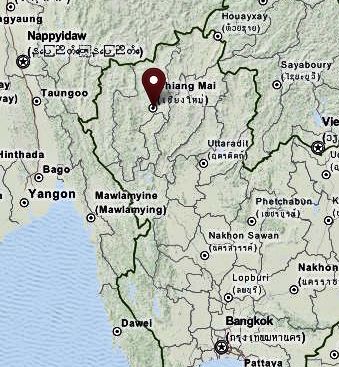
Abb.: Lage von
Chiang Mai (เชียงใหม่)
[Bildquelle: OpenStreetMap. --
Creative
Commons Lizenz (Namensnennung, share alike)]
1996-01-30
Ministerpräsident Banharn steht unter Verdacht, seine Master Thesis an der Ramkhamhaeng University (มหาวิทยาลัยรามคำแหง) teilweise von einer Arbeit seines Betreuers abgeschrieben zu haben. Der Betreuer ist Mitglied von Banharns Kabinett. Die Universität sagt, dass sie völlig auf die Gutachter vertraut, die die Thesis beurteilt und gebilligt hatten.
1996-02
Großbrand des Central Department Store in Bang Na (บางนา), Bangkok. Es ist der dritte Brand innerhalb von zwei Monaten eines Kaufhauses der Central-Department-Store-Kette. Eine Woche zuvor hatte Central Departement Store in Hua Mak (หัวหมาก), Bangkok gebrannt. Bald darauf brennt das MBK Center (Mahboonkrong, มาบุญครอง) sowie das Tokyu Departement Store (โตคิว สรรพสินค้า). Damit wächst die Zahl der Kaufhausbrände seit Oktober auf neun. Die Brandserie bewirkt, dass die Besucherzahl von Kinos fällt.
Abb.: Lage von Bang Na (บางนา)
[Bildquelle: OpenStreetMap. -- Creative Commons Lizenz (Namensnennung, share alike)]
Abb.: Lage von Hua Mak (หัวหมาก)
[Bildquelle: OpenStreetMap. -- Creative Commons Lizenz (Namensnennung, share alike)]
Abb.: Lage des MBK Center
[Bildquelle: OpenStreetMap. -- Creative Commons Lizenz (Namensnennung, share alike)]
1996-02-08
Inbetriebnahme des 3367 km langen Meeres-Glasfaser-Kabelsystems T-V-H (Thailand-Vietnam-Hong Kong)
1996-02-18
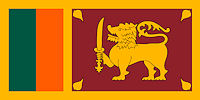
1996-02-24Sri Lanka beschuldigt Thailand, dass Liberation Tigers of Tamil Eelam (தமிழீழ விடுதலைப் புலிகள்) von Thailand aus operieren. Am 15. Februar hat die sri lankische Marine ein Schiff mit Waffen für die Tamil Tigers versenkt, das von Phuket (ภูเก็ต) ausgelaufen sein soll. Der Gouverneur von Phuket weist die Anschuldigung zurück.
Abb.: Lage von Phuket (ภูเก็ต) und Sri Lanka
[Bildquelle: OpenStreetMap. -- Creative Commons Lizenz (Namensnennung, share alike)]
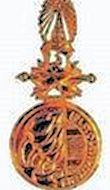
Zu National Artists (ศิลปินแห่งชาติ) werden ernannt:
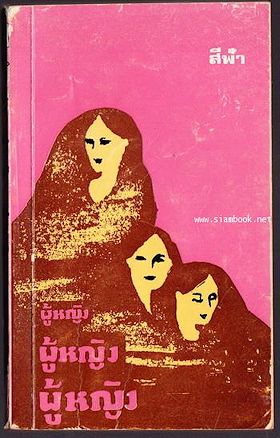
Abb.: Einbandtitel eines Buchs von Srifa Mahawan (หม่อมหลวงศรีฟ้า มหาวรรณ
= ศรีฟ้า ลดาวัลย์ = จุลลดา ภักดีภูมินทร์ = สีฟ้า)
[Fair use]
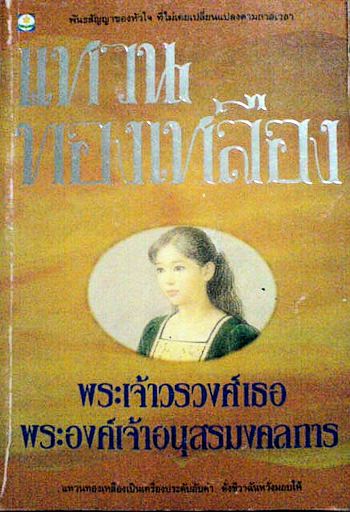
Abb.: Einbandtitel eines Buchs von Anusorn Mongkolkarn
(พลตรี พระเจ้าวรวงศ์เธอ พระองค์เจ้าอนุสรมงคลการ)
[Fair use]
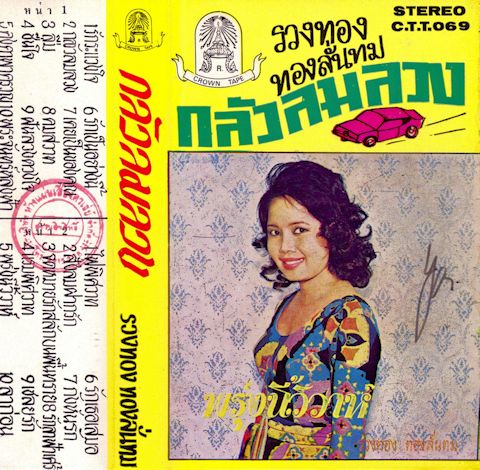
Abb.: Kassetten-Titel von Ruangthong Thongluntom (นางรวงทอง ทองลั่นธม
= Ruangthong Thongsathom - รวงทอง ทองลั่นทม)
[Fair
use]
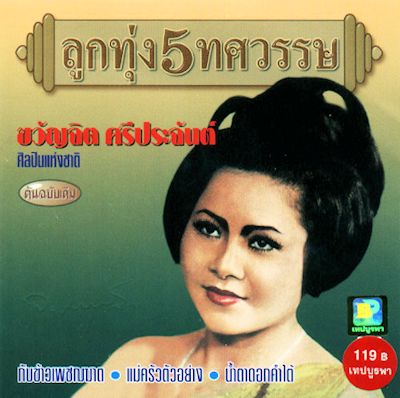
Abb.: CD-Titel von Kliew Setkit (นางเกลียว เสร็จกิจ
= Khwanchit Sriprachan - ขวัญจิต ศรีประจันต์)
[Fair use]
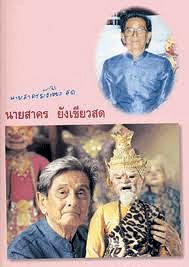
Abb.: Einbandtitel eines Buchs über Sakorn Yaungkhieosod (สาคร
ยังเขียวสด)
[Fair use]
1996-02-28


Als der japanische Ministerpräsident Ryutaro Hashimoto ((橋本 龍太郎, 1937 - 2006) zum ASEM-Meeting in Don Muang (ท่าอากาศยานดอนเมือง) landet, rächt sich Kronprinz Vajiralongkorn (พลเอก พลเรือเอก พลอากาศเอก สมเด็จพระบรมโอรสาธิราช เจ้าฟ้ามหาวชิราลงกรณ บดินทรเทพวรางกูร สิริกิติยสมบูรณสวางควัฒน์ วรขัตติยราชสันตติวงศ์ มหิดลพงศอดุลยเดช จักรีนเรศยุพราชวิสุทธ สยามมกุฎราชกุมาร, 1952 - ) für die angebliche Schmach, die er 1987-09 in Japan erlitten hat: der Kronprinz blockierte mit drei F-5 Jagdflugzeugen, von denen er eines selbst lenkte, das Flugzeug des Ministerpräsidenten 20 Minuten lang und hinderte so den Ministerpräsidenten am Aussteigen. Japan übergeht den Vorfall mit Stillschweigen.
Abb.: Denkmal F-5-Formation, Don Muang (ดอนเมือง), 2014
[Bildquelle: Alec Wilson. -- http://www.flickr.com/photos/76052339@N05/14569395750. -- Zugriff am 2014-10-25. -- Creative Commons Lizenz (Namensnennung, share alike)]
1996-03-01/02
In Bangkok findet das erste Asia-Europe Meeting (ASEM) statt. Es nehmen die Regierungschefs der 15 EU-Staaten und von 10 asiatischen Ländern teil. Das Treffen behandelt vor allem wirtschaftliche Zusammenarbeit, aber auch nukleare Abrüstung und Menschenrechtsverletzungen in Ost-Timor.
Abb.: Teilnehmerstaaten des ASEM 2011
[Bildquelle: Datastat / Wikipedia. -- Public domain]
"Das Asien-Europa-Treffen (Asia-Europe Meeting: ASEM) ist ein interregionales Gesprächsforum, das für den multilateralen Austausch zwischen Europa und Asien in den Bereichen Wirtschaft, Politik, Bildung, Kultur, Umwelt- und Klimaschutz genutzt wird. Gründung und Entwicklung
1994 schlug der damalige Premierminister von Singapur, Goh Chok Tong (吳作棟), dem damaligen französischen Premierminister Édouard Balladur das „Konzept eines Asien-Europa Gipfels“ vor, um die Beziehungen zwischen Europa und Asien zu vertiefen. Die ersten Beratungen wurden im März 1996 abgehalten, dabei beteiligten sich 16 europäische (die EU-Mitgliedstaaten und die EU-Kommission) und 10 asiatische Teilnehmer, nämlich die 7 damaligen ASEAN-Staaten sowie Japan, China und die Republik Korea (Südkorea). Beratungen der Außenminister, der Minister für Wirtschaft, Finanzen, Umwelt, Einwanderung und Technologie wurden gleichzeitig abgehalten.
Seit 2004 nehmen auch die neuen ASEAN-Mitglieder Kambodscha, Myanmar und Laos sowie die 10 neuen EU-Staaten am ASEM teil. Auf dem Treffen 2006 in Helsinki wurde die Aufnahme Bulgariens, Rumäniens, Indiens, der Mongolei, Pakistans sowie des Sekretariates der ASEAN beschlossen. Mit dieser Erweiterung repräsentieren die Mitgliedstaaten der ASEM mehr als die Hälfte der Weltbevölkerung.
AufgabenASEM ist als informelles Dialogforum europäischer und asiatischer Staaten konzipiert. Ziel der ministeriellen Gespräche und zweijährlichen Gipfeltreffen der Staats- und Regierungschefs aus Europa und Asien ist ein Austausch über Themen und Probleme Asiens und der EU sowie im Austausch untereinander. Thematisch basiert ASEM dabei auf drei Säulen:
- Wirtschaft: Das Kerngebiet der ASEM. Zusammenarbeit durch regelmäßige Treffen der Wirtschafts- und Finanzminister. Inzwischen um zahlreiche Unterorganisationen wie das Asiatisch-Europäische Geschäftsforum (AEBF) und diverse sog Kerngruppen ergänzt.
- Politik: Zusammenarbeit durch Ad-hoc-Treffen auf Ministerebene. Themen sind vor allem Migrations- und Umweltproblematiken sowie der technologisch-wissenschaftliche Austausch
- Kultur bzw. Soziales: Zusammenarbeit auch hier durch Ad-hoc-Treffen auf Ministerebene. Themen sind vor allem bildungspolitischer Austausch, der Erhalt des kulturellen Erbes und soziale Wohlfahrt. Dieser Säule ist die Asien-Europa-Stiftung mit Sitz in Singapur (ASEF) untergeordnet.
Kernstück des regionalen Dialogs sind die Gipfeltreffen, auf denen die Regierungs- und Staatschefs aller Mitgliedsstaaten zusammentreffen. Sie finden alle zwei Jahre abwechselnd in Asien und Europa statt. Die bisherigen Treffen wurden ausgerichtet von Bangkok (Thailand; 1996), London (Großbritannien; 1998), Seoul (Südkorea; 2000), Kopenhagen (Dänemark; 2002), Hanoi (Vietnam; 2004), Helsinki (Finnland; 2006) und Peking (VR China; 2008). Das Gipfeltreffen 2010 wird in Belgien ausgerichtet.
MitgliederSeit der 2006 auf dem Gipfel von Helsinki beschlossenen Erweiterung hat das ASEM die folgenden 45 Partner (43 Staaten und zwei Organisationen):
- Europa (27 Staaten und EU-Kommission)
- Belgien, Bulgarien, Dänemark, Deutschland, Estland, Finnland, Frankreich, Griechenland, Irland, Italien, Litauen, Lettland, Luxemburg, Malta, Niederlande, Österreich, Polen, Portugal, Rumänien, Schweden, Slowakei, Slowenien, Spanien, Tschechien, Ungarn, Vereinigtes Königreich, Zypern, EU-Kommission.
- Asien (16 Staaten und ASEAN-Sekretariat)
- Brunei, China, Indien, Indonesien, Japan, Kambodscha, Republik Korea, Laos, Malaysia, Mongolei, Myanmar, Pakistan, Philippinen, Singapur, Thailand, Vietnam, Sekretariat der ASEAN
Laut der offiziellen Internetseite des Gastgebers Belgien nehmen in Jahr 2010 erstmals auch Australien und Neuseeland am Gipfeltreffen vom 3. bis 5. Oktober 2010 teil.
Literatur
- Aggarwal, Vinod K./Koo, Min Gyo: The Evolution of APEC and ASEM: Implications of the New East Asian Bilateralism. In: European Journal of East Asian Studies, Vol. 4, No. 2, S. 234-261, 2005.
- Dent, Christopher: The Asia-Europe Meeting and Inter-Regionalism - Towards a Theory of Multilateral Utility. In: Asian Survey, Vol. 44, No. 2, S. 213-236, 2004.
- Loewen, Howard: Theorie und Empirie transregionaler Kooperation am Beispiel des Asia-Europe Meeting (ASEM). In: Schriften zur internationalen Politik. Bd. 6, Hamburg, 2003, ISBN 3-8300-0945-3
- Robles, Alfredo C.: The Asia-Europe Meeting : the theory and practice of interregionalism. London [u.a.] : Routledge, 2008. ISBN 0-415-45223-6 (hardback) / ISBN 0-203-93326-5 (ebook)"
[Quelle: http://de.wikipedia.org/wiki/ASEM. -- Zugriff am 2011-12-21]
1996-03-01
Nach 48 Erscheinungsjahren stellt Thailands erste Frauenzeitschrift, Satree Sarn (สตรีสาร, Women's Voice, 1948 - 1996) ihr Erscheinen ein. Der Herausgeber Nilawan Pinthong (นิลวรรณ ปิ่นทอง, 1914 - ) stellt die Zeitschrift aus Altersgründen ein.
Abb.: Hefttitel
[Fair use]
1996-03-07

Waffenstillstandsabkommen zwischen der Armee von Myanmar und der Karenni National Progressive Party (KNPP)
1996-03-10

Kremation Ihrer Königlichen Hoheit Prinzessin Sri Nagarindra (ศรีนครินทรา, 1900 - 1995), Mutter der Könige Ananda Mahidol (Rama VIII.) und Bhumibol (Rama IX.). (siehe oben!). In Bangkok legen ca. 1,4 Mio. Personen Sandelholz-Blumen am Kremationsort und in 38 Tempeln Bangkoks nieder. Außerhalb der Kremationsprozession sind die Straßen Bangkoks wie ausgestorben.
1996-03-17

Ministerpräsident Banharn beginnt einen zweitägigen offiziellen Besuch in Myanmar. Es ist der erste Besuch eines thailändischen Ministerpräsidenten in Myanmar seit 16 Jahren. Unterzeichnung eines Vertrags über Grenz-Handel. Öffnung des Grenzübergangs Tachilek-Mae Sai (တာချီလိတ်မြို့/ท่าขี้เหล็ก - แม่สาย) für den Handel.
Abb.: Myanmar
[Bildquelle: CIA. -- Public domain]
Abb.: Lage des Grenzübergangs Tachilek-Mae Sai (တာချီလိတ်မြို့/ท่าขี้เหล็ก - แม่สาย)
[Bildquelle: OpenStreetMap. -- Creative Commons Lizenz (Namensnennung, share alike)]
1996-03-27
Die Bangkok Post ist ab jetzt im Internet präsent.
Abb.: ®Logo
1996-03-28

Anlässlich des 50jährigen Thronjubiläums veröffentlicht Seine Königliche Majestät in einer Prachtausgabe sein Werk:
พระบาทสมเด็จพระปรมินทรมหาภูมิพลอดุลยเดช สยามินทราธิราช บรมนาถบพิตร <๒๔๗๐ - > [Bhumibol Adulyadet <Thailand, König> <1927 - 2016 >] : พระมหาชนก = The story of Mahajanaka. -- กรุงเทพฯ : อมรินทร์, ©๒๕๓๙ = 1996. -- Cartoonist: ชัย ราชวัตร (Chai Rachawat <1941 - >).
Abb.: Einbandtitel1999 erscheint Cartoon-Edition, Preis: 35 Baht:
พระบาทสมเด็จพระปรมินทรมหาภูมิพลอดุลยเดช สยามินทราธิราช บรมนาถบพิตร <๒๔๗๐ - > [Bhumibol Adulyadet <Thailand, König> <1927 - 2016 >] : พระราชนิพนธ์ พระมหาชนก = The story of Mahājanaka. -- ฉบับการ์ตูน. -- กรุงเทพฯ : อมรินทร์, ©๒๕๔๒ = 1999. -- 120 S. : Ill. ; 27 cm. -- Cartoonist: ชัย ราชวัตร (Chai Rachawat <1941 ->)
Abb.: Einbandtitel
1996-03-25 - 1996-04-23
Führer von Bauerngruppen, Studierende und Industriearbeiter bilden ein "Village of the Poor" (หมู่บ้านคนจน) vor dem Regierungsgebäude (ทำเนียบรัฐบาล) in Bangkok, um auf Landbesitzprobleme, Entschädigung bei Staudammbauten, Arbeitsbedingungen und Giftmüll hinzuweisen. Am Höhepunkt umfasst das Village 12.000 "Einwohner". Die friedliche Demonstration dauert 28 Tage. Die Regierung verspricht, alle 47 vorgetragenen Probleme zu lösen.
Abb.: Lage des Regierungsgebäudes (ทำเนียบรัฐบาล)
[Bildquelle: OpenStreetMap. -- Creative Commons Lizenz (Namensnennung, share alike)]
1996-03-30
Premiere des Films เรือนมยุรา (House of the peacock) von Cherd Songsri (เชิด ทรงศรี, 1931 – 2006)
Abb.: Filmplakat
[Fair use]
1996-04-04
Entwurf eines Anti-Prostitutionsgesetzes. Danach würden Polizisten, die an Kinderprostitution beteiligt sind, schwer bestraft. Drei Bordellbesitzer in Mae Sai (แม่สาย) und der Stadt Chiang Rai (เชียงราย) zeigen sich unbeeindruckt vom Gesetzesentwurf. Man werde schon Schlupflöcher finden. So lange Nachfrage danach besteht und es arme Eltern gibt, werde es Kinderprostitution geben.
Abb.: Lage von Mae Sai (แม่สาย) und der Stadt Chiang Rai (เชียงราย)
[Bildquelle: OpenStreetMap. -- Creative Commons Lizenz (Namensnennung, share alike)]
1996-04-06
Polizei-Razzia auf Bangkoks Royal City Avenue (RCA, อาร์ซีเอ). Diese ist bei Minderjährigen für Sauf- und Drogenexzesse beliebt.
Abb.: Lage der Royal City Avenue (RCA, อาร์ซีเอ)
[Bildquelle: OpenStreetMap. -- Creative Commons Lizenz (Namensnennung, share alike)]
Abb.: RCA (อาร์ซีเอ), Bangkok, 2008
[Bildquelle: choo chin nian. -- http://www.flickr.com/photos/chinnian/2998142537/. -- Zugriff am 2011-12-21. -- Creative Commons Lizenz (Namensnennung, share alike)]
"Royal City Avenue or RCA is one of Bangkok's largest entertainment and clubbing area. Located on in Huai Khwang (ห้วยขวาง) district, RCA is a long street located between Rama IX Road (ถนนพระราม 9) and Phetchaburi Road (ถนนเพชรบุรี). It contains a multitude of bars, nightclubs and live music venues. RCA, a government designated Entertainment Zone, is frequently visited by young people."
[Quelle: http://en.wikipedia.org/wiki/Royal_City_Avenue. -- Zugriff am 2011-12-21]
1996-04-11
Saengchai Sunthornwat (แสงชัย สุนทรวัฒน์), Direktor der Mass Communications Organisation of Thailand (MCOT - บริษัท อสมท จำกัด (มหาชน) wird vor seinem Haus in Pak Kret (ปากเกร็ด), Provinz Nonthaburi (นนทบุรี), von Berufskillern erschossen. Auftragsgeber sind der frühere Parlamentsabgeordnete von Chiang Rai, Thavi Phuttachan, und dessen Schwiegermutter, Ubon Boonchalothorn. Thavi's Anteile am Radio waren durch Saengchai bedroht.
Abb.: Lage von Pak Kret (ปากเกร็ด)
[Bildquelle: OpenStreetMap. -- Creative Commons Lizenz (Namensnennung, share alike)]
1996-04-12
Zur 700-Jahr-Feier der Gründung Chiang Mai's findet ein brahmanische Ritual statt.
1996-04-12
Tod des Khene-Spielers und Bandleaders Samai Onwong (สมัย อ่อนวงศ์, 1933 - 1996)
Künstlerlink auf Spotify:
URI: spotify:artist:2DkczIw1qmGA8CLXtWbWbl
URL: https://open.spotify.com/artist/2DkczIw1qmGA8CLXtWbWbl
Abb.: CD-Hülle
[Fair use]
1996-04-18
Es erscheint:
Walakkamon Eamwiwatkit [วลักษณ์กมล เอี่ยมวิวัฒน์กิจ]: Alarm sounded over air pollution. -- In: The Nation <Bangkok>. -- 1996-04-18
Danach ist Feinstaub in Bangkok für Allergien und Atemwegserkrankungen von über einer Million Bangkoker verantwortlich.
1996-04-19
"Thailand's severe problems of prostitution and AIDS have persisted mainly because male policy makers have never seen double sexual standards as a problem."
1996-04-27

Tod des CIA-Spitzenbeamten William Egan Colby (1920 – 1996)
Abb.: William Egan Colby
[Bildquelle: CIA/Wikimedia. -- Public domain]
"Vietnam In 1959 Colby became the CIA's deputy chief and then chief of station in Saigon, Vietnam, where he served until 1962. Tasked by CIA with supporting the Diem (Ngô Đình Diệm, 1901 - 1963) government, Colby established a relationship with President Diem's family and with Ngo Dinh Nhu (1910 - 1963), the president's brother, with whom Colby became close. While in Vietnam, Colby focused intensively on building up Vietnamese capabilities to combat the Viet Cong insurgency in the countryside. He argued that "the key to the war in Vietnam was the war in the villages." In 1962 he returned to Washington to become the deputy and then chief of CIA's Far East Division, succeeding Desmond Fitzgerald (1910 - 1967), who had been tapped to lead the Agency's efforts against Castro's Cuba. During these years Colby was deeply involved in Washington's policies in East Asia, particularly with respect to Vietnam, as well as Indonesia, Japan, Korea, and China. He was deeply critical of the decision to abandon support for Republic of Vietnam President Ngo Dinh Diem, and he believed this played a material part in the weakening of the South Vietnamese position in the years following.
In 1968, while Colby was preparing to take up the post of chief of the Soviet Bloc Division of the Agency, President Johnson instead sent Colby back to Vietnam as deputy to Robert Komer (1922 - 2000), who had been charged with streamlining the civilian side of the American and South Vietnamese efforts against the Communists. Shortly after arriving Colby succeeded Komer as head of the U.S./South Vietnamese rural pacification effort named CORDS (Civil Operations and Revolutionary Development Support). Part of the effort was the controversial Phoenix Program (Chiến dịch Phụng Hoàng), an initiative designed to identify and attack the "Viet Cong Infrastructure." There is considerable debate about the merits of the program, which was subject to allegations that it relied on or was complicit in assassination and torture. Colby, however, consistently insisted that such tactics were not authorized by or permitted in the program.
More broadly, along with Ambassador Ellsworth Bunker (1894 - 1984) and MACV (Military Assistance Command, Vietnam) commander General Creighton Abrams (1914 - 1974), Colby was part of a leadership group that worked to apply a new approach to the war designed to focus more on pacification (winning hearts and minds) and securing the countryside as opposed to the "search and destroy" approach that had characterized General William Westmoreland's (1914 - 2005) tenure as COMUSMACV (Commander US Military Assistance Command Vietnam). Some, including Colby later in life, argue that this approach succeeded in reducing the Communist insurgency in South Vietnam, but that South Vietnam, without air and ground support by the United States after the 1973 peace accords, was ultimately overwhelmed by a conventional North Vietnamese assault. The CORDS model and its approach influenced U.S. strategy and thinking on counterinsurgency in the 2000s in Iraq and Afghanistan."
[Quelle: https://en.wikipedia.org/wiki/William_Colby. -- Zugriff am 2016-08-31]
1996-05
Eine Teilnehmerin am monatlichen Treffen des Lesbenvereins Anjaree (อัญจารี):
"A member, Ji, said she felt that she was always disregarded in her family because she was female. Another member, Ting, asked if Ji was Chinese, because Ting also felt poorly treated by her Sino-Chinese family. Ting said she was treated like "shit" by her family and that women were part of the family "just to clean" and to serve others. Ting explained that what it took to be a good husband and what it took to be a good wife were unequal. For a man, just to come home and be served was enough to be a good husband, but to be a good wife or mother, one had to work and serve others constantly. Ji agreed and said she wanted to be independent and had always been attracted to women. Ting had developed a tom identity and said she "wanted to be a leader," did not want to be neat and proper, and did not want to marry or have children. Ji said she did not even want to marry a woman but instead wanted to be friends with women. She said that marriage was never good for women, and they always gave up more than men did when they married." [Quelle: Sinnott, Megan J.: Toms and dees : transgender identity and female same-sex relationships in Thailand. -- Honolulu : University of Hawaii Pr., 2004. -- 261 S. : Ill. ; 24 cm. -- ISBN 0824828526. -- Zugl. Diss., Univ. of Wisconsin - Madison, 2002. -- S.
1996-05-05
Es erscheint:
Pennapa Hongthong [เพ็ญนภา หงษ์ทอง] ; Kamol Sukin [กมล สุกิน]: Spectre of insider land trading looms. -- In: The Nation <Bangkok>. -- 1996-05-05
"Pennapa Hongthong [เพ็ญนภา หงษ์ทอง] wrote about a land scandal on Koh Samet [เกาะเสม็ด] in Chumphon [ชุมพร] province (a different island from the more famous Koh Samet in Rayong province). The local villagers had long tried to obtain title to land they had worked on for generations, but were rebuffed by Land Department officials who claimed that regulations did not allow land ownership on islands. Unbeknownst to the villagers, the regulations were modified in 1994; by the time they found out, much of the land was in the hands of some well-connected outside investors, including the family of Suchart Tancharoen [สุชาติ ตัน เจริญ, 1958 - ], who just so happened to be the deputy interior minister in charge of the Land Department."[Quelle: Fahn, James David <1965 - >: A land on fire : the environmental consequences of the Southeast Asian boom. -- Boulder : Westview, 2003. -- 365 S. ; 24 cm. -- ISBN 0-8133-4267-8. -- S. 67. -- Fair use]
Abb.: Lage von Koh Samet [เกาะเสม็ด]
[Bildquelle: OpenStreetMap. -- Creative Commons Lizenz (Namensnennung, share alike)]
1996-05-07

Die Deutsche Presse Agentur (dpa) berichtet, dass laut WHO die Luftverschmutzung Bangkoks die Höchstwerte um das 14fache überschreitet. Allein das Einatmen dieser Luft ist für Kinder unter 12 gesundheitsgefährdend.
1996-05-17
Das Finanzministerium übernimmt die Bangkok Bank of Commerce (BBC - ธนาคารกรุงเทพฯ พาณิชยการ - บีบีซี)), um sie vor dem Zusammenbruch zu retten. In der Bank waren 1,6 Milliarden Baht veruntreut worden. Die Bankkunden hatten daraufhin ihr Geld in so großen Mengen abgezogen, dass die Bank zusammenzubrechen drohte. Die Übernahme in Staatsbesitz erfolgt aufgrund des Commercial Bank Act. Es kommt zu mehreren Verhaftungen.
"In 1989, Rakesh Saxena (ราเกซ สักเสนา, ) became advisor to Krirk-kiat Jalichandra (เกริกเกียรติ ชาลีจันทร์), new senior vice-president of Bangkok Bank of Commerce (ธนาคารกรุงเทพฯ พาณิชยการ - บีบีซี). The bank tried hostile takeovers against many of the large Thai companies that traded publicly on the stock exchange. According to later investigation, it also gave cheap loans to various public officials and politicians in India, Russia, Thailand, Sinagapore, Saudi Arabia and Lebanon. Bangkok Bank of Commerce collapsed in 1996 and the Bank of Thailand (ธนาคารแห่งประเทศไทย) took it over. The collapse contributed to the Asian financial recession, economic and political crisis and the 1997 devaluation of the baht. Saxena was at his residence in Prague or Zürich at the time the story broke, and he never returned to Thailand.
In June 1996, Thai authorities charged Saxena, Krikkiat Jalichandra, Rajan Pillai and Adnan Khashoggi (عدنان خاشقجي) and a number of other people with embezzling money estimated to be worth $US2.2 billion (or according to other estimates, $US88 million). Saxena himself had allegedly siphoned off £300 million in 1992-1993 through a string of derivative transactions. Saxena said that he was just an advisor and a trader and that the collapse of the real estate markets was the real trigger of the recession. His relationship with Russian tycoons and Arab sheikhs continues to be a subject of speculation."
[Quelle: http://en.wikipedia.org/wiki/Bangkok_Bank_of_Commerce#Bangkok_Bank_of_Commerce. -- Zugriff am 2011-12-21]
1996-05-17

Tod von Mary Rosamund Haas (1910 - 1996)
Abb.: Mary Rosamund Haas
[Bildquelle: http://www.sealang.net/thai/haas-uc.htm / Wikipedia. -- Fair use]
"Mary Rosamund Haas (January 12, 1910 – May 17, 1996) was an American linguist who specialized in North American Indian languages, Thai, and historical linguistics. Early life
Haas attended high school in Richmond, Indiana, and later Earlham College.
Early work in linguisticsHaas undertook graduate work on comparative philology at the University of Chicago. She studied under Edward Sapir (1884–1939), whom she would follow to Yale. She began a long career in linguistic fieldwork, studying various languages during the summer months.
Over the ten-year period from 1931 to 1941, Haas studied Nitinat, Tunica, Natchez, Creek, Koasati, Choctaw, Alabama, and Hichiti, mostly languages of the American southeast. Her first published paper, A Visit to the Other World, a Nitinat Text, written in collaboration with Morris Swadesh (1909 – 1967), was published in 1933.[1]
She completed her PhD in linguistics at Yale University in 1935 at age 25, with a dissertation titled A Grammar of the Tunica Language. (Tunica was once spoken in what is now Louisiana and Mississippi.) In the 1930s, Haas worked with the last fluent speaker of Tunica, Sesostrie Youchigant, producing extensive texts and vocabularies.[2]
Shortly after, Haas conducted fieldwork with Watt Sam (1876 – 1944) and Nancy Raven (1872 – 1957), the last native two speakers of the Natchez language in Oklahoma. Her extensive unpublished field notes have constituted the most reliable source of information on the now dead language. She conducted extensive fieldwork on the Creek language, and was the first modern linguist to collect extensive texts in the language. Most of her notes on Creek and Natchez remain unpublished, but they are being used by linguists in the 21st century.
Marriage and familyShe married Morris Swadesh, also a linguist.
Role in teachingHaas was noted for her dedication to teaching linguistics, and to the role of the linguist in language instruction. Her student Karl V. Teeter (1929 – 2007) pointed out in his obituary of Haas[3] that she trained more Americanist linguists than her former instructors Edward Sapir and Franz Boas (1858 – 1942) combined: she supervised fieldwork in Americanist linguistics by more than 100 doctoral students. She was a founder and director of the Survey of California Indian Languages,[4] in this capacity she advised nearly fifty dissertations, including those of many linguists who would go on to be influential in the field, including William Bright (Karok), William Shipley (Maidu), Robert Oswalt (Kashaya), Karl Teeter (Wiyot), Margaret Langdon (Diegueño), Sally McLendon (Eastern Pomo), Victor Golla (Hupa), Marc Okrand (Mutsun), Kenneth Whistler (Proto-Wintun), William Jacobsen (Washo), and others.
Work on ThaiDuring World War II, the United States government viewed the study and teaching of Southeast Asian languages as important to the war effort,[5] and under the auspices of the Army Specialized Training Program at the University of California at Berkeley, Haas developed a program to teach the Thai language.[6] Her authoritative Thai-English Students' Dictionary, published in 1964, is still in use.[7]
She was appointed to a permanent position at the University of California, Berkeley Department of Oriental Languages, an appointment she attributed to Peter A. Boodberg (Пётр Алексеевич фон Будберг, 1903 – 1972), whom she described as "ahead of his time in the way he treated women scholars—a scholar was a scholar in his book"[2]).
In 1963, Haas served as president of the Linguistic Society of America. She was elected a fellow of the American Academy of Arts and Sciences in 1974.[8] She received honorary doctorates from Northwestern University in 1975, the University of Chicago in 1976, Earlham College, 1980, and Ohio State University in 1980.[9]
Mary Haas died on May 17, 1996 in Alameda County, California, age 86."
[Quelle: https://en.wikipedia.org/wiki/Mary_Haas. -- Zugriff am 2015-09-12]
1996-05-18
Tod von Thawee Junlasap (พลอากาศเอก ทวี จุลละทรัพย์, 1914 - 1996)
"Thawee Junlasap (พลอากาศเอก ทวี จุลละทรัพย์, August 8, 1914 - May 18, 1996) was a Royal Thai Air Force (กองทัพอากาศไทย) officer, and a member of the Seri Thai (ขบวนการเสรีไทย). Air Chief Marshal Thawee was widely considered a pillar of Thailand's sporting world. After a successful career in the military which saw him rise to Supreme Command chief of staff in 1961, he turned to politics and was appointed deputy defense minister in 1963. He later served as agriculture minister and deputy premier. Head of Thailand's National Olympic Committee for 22 years until his death, he was a member of the International Olympic Committee and a force behind the Southeast Asian Games.
EducationHe became a cadet at the Army Academy upon finishing secondary school, and graduated with the rank of 2nd Lieutenant in 1935.
Early careerThawee soon joined the Air Force, and by 1938 had been promoted to Flying Officer. The young officer was soon enrolled in bombing and training courses with the RAF and USAAF, and returned two years later to become Commanding Officer of the 3rd Fighter Squadron, whose base was at Don Muang.
The conflict with French Indochina saw Thawee leading the 60th Fighter Squadron, which was composed of nine Hawk 75Ns. On January 24, 1941, it was Thawee's fighters that escorted the Ki-30 Nagoyas on the raid on the French airfield at Angkor Wat.
Flight Lieutenant Thawee was a member of the last Thai military mission to Malaya in October 1941, and returned just days before the commencement of the Pacific War.
World War IIEarly days
At 08:00 on December 8, 1941, Flight Lieutenant Thawee Junlasap and Pilot Officer Sangwaan Worasap rushed off in their Hawk 75Ns to pursue a lone Japanese reconnaissance plane cruising in the skies above Don Muang. The chase was frantic, but ultimately the Japanese pilot was saved from being shot down when the two Thai pilots were ordered to stand down and return to base.
Thawee was sent later to serve as an attaché to General Yamashita's ((山下 奉文, 1885 - 1946) headquarters at Alor Star. He accompanied the Japanese 25th Army to as far as Johore before being forced to return to Bangkok as a result of malarial infections.
Working with AlliesIn March 1945, Wing Commander Thawee was ordered to report to the Army Deputy Commander-in-Chief, who quickly presented the Wing Commander to the Regent at his riverside residence. The regent proceeded to explain that Thawee had been chosen to carry out liaison duties with the Allies in India on behalf of the Seri Thai. He was to leave on the night of April 21 by seaplane.
Thawee was to make the journey with three Americans—two OSS officers, Majors John Wester and Howard Palmer; and the Flying Tigers' "Black Mac" McGarry, who ever since being shot down in the Chiang Mai area in January 1942 had been spending the war in a POW camp. Also in tow were 2nd Lieutenant Wimon Wiriyawit, a Seri Thai officer, and Fon Saengsinkaew.
The party arrived in Madras some hours later, and Thawee continued on to Colombo, where he met Sanguan Tularak, a fellow Seri Thai agent. The sojourn in Ceylonese capital did not last long, however, as the Wing Commander was taken by Colonel John Coughlin of the OSS to meet Lord Mountbatten at Kandy. There Thawee received his OSS codename, "Dicky Stone".
Wing Commander Thawee spent his time at Kandy studying aerial photographs of Thailand and assisting the bombing planners at South East Asia Command in selecting accurate Japanese military targets as opposed to Thai civilian ones. Thawee also received lessons in espionage and sabotage, and was forced to attend an intensive week-long OSS training course in Maryland.
A posting to Calcutta saw Thawee acting as a liaison officer at Mountbatten's American deputy, General Raymond B. Wheeler's headquarters. The Thai again acted as a consultant to various USAAF bombing-run plans. He returned to Thailand a while later via seaplane. Thawee was to collect intelligence regarding Japanese troop dispositions, and to aid in the establishment of secret airfields for which the Allies could fly in agents and supplies to reinforce the Seri Thai.
The Wing Commander immediately reported back to Pridi's new residence at the Bang Pa-In Summer Palace (พระราชวังบางปะอิน)), approximately 70 km north of Bangkok.
The next week was spent surveying the Northeast for prospective airfield sites. The sites they chose was in Chaiyaphum Province (ชัยภูมิ) ) and at Nonhan in Loei Province (เลย). The Royal Thai Air Force duly began construction, assisted in no little part by the Governor of Chayaphum, a man fully committed to the resistance, and by Khon Kaen's (ขอนแก่น) chief Seri Thai officers, Tiang Sirikhanth (เตียง ศิริขันธ์, 1909 - 1952) and Chamlong Daoruang.
Thawee once more returned to Calcutta, and from there on he oversaw equipment drops by B-24s on Sakhon Nakhorn (สกลนคร), and accompanied a C-46 to Kunming (昆明) and Chungking (重慶).
Return to ThailandThe airfields were ready by June, and Thawee was tasked to return to Thailand on board the first RAF C-47 to fly into the country. Prince Yuthisathien Sawasdiwat, a Seri Thai officer who had been parachuted in to evaluate the airfields, were waiting for him. On June 14 the plane landed, but the wheels sank into the ground. Once the supplies were unloaded, however, the airfield personnel were able to push the plane out of the mud and repair minor damage.
Thawee returned to Calcutta to pick up OSS Major Nicol Smith and Lloyd George, a civilian reports officer, and to bring them to Bangkok for direct talks with Pridi.
End of warThawee supervised the creation of a massive arms cache in the many classrooms of Thammasat University (มหาวิทยาลัยธรรมศาสตร์), and returned to Calcutta on August 10, where he celebrated the end of the war with the staff of SEAC.
PostwarThawee accompanied Seni Pramoj (หม่อมราชวงศ์เสนีย์ ปราโมช, 1905 - 1997) back to Bangkok on September 16, and returned permanently on December 5, 1945, escorting the young King Ananda Mahidol."
1996-05-30
Es erscheint:
Walakkamon Eamwiwatkit [วลักษณ์กมล เอี่ยมวิวัฒน์กิจ]: Official silence over city's noise pollution deafening. -- In: The Nation <Bangkok>. -- 1996-05-30
Danach haben über ein Viertel der Verkehrspolizisten Bangkoks Gehörschäden.
1996-06-01

Öffnung des Grenzübergangs Kawthaung - Ranong (ကော့ သောင်း မြို့ - ระนอง) für den Handel
Abb.: Lage des Grenzübergangs Kawthaung - Ranong (ကော့ သောင်း မြို့ - ระนอง)
[Bildquelle: OpenStreetMap. -- Creative Commons Lizenz (Namensnennung, share alike)]
1996-06-02

Bhichit Rattakul (พิจิตต รัตตกุล, 1946 - ) wird zum Gouverneur von Bangkok (ผู้ว่าราชการกรุงเทพมหานคร) gewählt.
Abb.: Bhichit Rattakul (พิจิตต รัตตกุล)
[Bildquelle: th.Wikipedia. -- Fair use]
"Bhichit Rattakul (Thai: พิจิตต รัตตกุล), (born August 30, 1946) is a Thai politician who served as the governor of Bangkok from 1996 to 2000 and the science minister for Thailand. Bhichit earned a Ph.D. in Chemical Engineering from Brigham Young University in 1976 and was instrumental in the September 2000 Thailand visit of LDS Church President Gordon B. Hinckley. As of May 2008, Bhichit serves as Director of the Asian Disaster Preparedness Center, which is run under the auspices of the United Nations." [Quelle: http://en.wikipedia.org/wiki/Bhichit_Rattakul. -- Zugriff am 2011-12-21]
1996-06-09

50jähriges Thronjubiläum des Königs.
Abb.: Königliches Emblem zum 50jährigen Thronjubiläum
"The Royal Seal of His Majesty the King is featured in the middle, topped by the Chakri Dynasty crest and the Royal Crown. A double-footed gold tray holds the Constitution, signifying the constitutional monarchy. Two white elephants flank and support the seal, each carrying a tiered royal umbrella. They signify the following:
- Elephants were royal carriers, symbolizing the loyal Thai subjects who serve their monarch.
- White elephants are, according to the old belief, the symbol of might, wisdom and prowess, befitting a great monarch.
- Elephants are national symbols, once portrayed on the national flag. They represent long life, comparable to the long history of the Thai nation."
[Quelle: http://www.rama9art.org/artisan/emblem/rce4.html. -- Zugriff am 2013-01-14]
1996

Aus Anlass des 50jährigen Thronjubiläums konzertieren - vom US State Departement gesponsert - in Bangkok miteinander:
US-Jazz-Pianist und -Komponist Herbie Hancock (1940 - )
Künstlerlink auf Spotify:
URI: spotify:artist:2ZvrvbQNrHKwjT7qfGFFUW
URL: https://open.spotify.com/artist/2ZvrvbQNrHKwjT7qfGFFUWUS-Jazz-Saxophonist und -Komponist Wayne Shorter (1933 - )
Künstlerlink auf Spotify:
URI: spotify:artist:0ZqhrTXYPA9DZR527ZnFdO
URL: https://open.spotify.com/artist/0ZqhrTXYPA9DZR527ZnFdOUS-Jazz-Schlagzeuger, -Perkussionist und Komponist T.S. Monk Jr. (1949 - )
Künstlerlink auf Spotify:
URI: spotify:artist:1c2YqqDvGzQYIYgt5VblMc
URL: https://open.spotify.com/artist/1c2YqqDvGzQYIYgt5VblMcUS-Jazz-Saxophonist, -Trompeter und Komponist Benny Carter (1907 - 2003)
Künstlerlink auf Spotify:
URI: spotify:artist:5dlCVmfRbWVGOJYHzGyk32
URL: https://open.spotify.com/artist/5dlCVmfRbWVGOJYHzGyk32
1996

Aus Anlass des 50jährigen Thronjubiläums erscheint:
The Eagle and the elephant : Thai-American relations since 1833 = ความสัมพันธ์ไทย-อเมริกัน ตั้งแต่ พ.ศ. 2376. -- Golden Jubilee ed. = ฉบับกาญจนาภิเซกสมโภช / ed. Patricia Norland [u.a.]. -- Bangkok : United States Information Service, 1997. -- 279 S. : Ill. ; 29 cm. -- ISBN 974-89415-1-5
Abb.: Umschlagtitel
1996-06-19
Um den Arbeitskräftemangel zu lindern legalisiert die Regierung 700.000 illegale Fremdarbeiter in 39 Provinzen. Thailand fehlen 1,36 Mio. Arbeiter.
1996-06-29


In Gretzenbach, Schweiz, wird Wat Srinagarindravararam (วัดศรีนทรวราราม) eröffnet.
Abb.: Lage von Gretzenbach (Schweiz)
[Bildquelle: OpenStreetMap. -- Creative Commons Lizenz (Namensnennung, share alike)]
Abb.: Lage von Gretzenbach (Schweiz)
[Bildquelle: OpenStreetMap. -- Creative Commons Lizenz (Namensnennung, share alike)]
Abb.: Wat Srinagarindravararam (วัดศรีนทรวราราม)
[Bildquelle: Alois Payer, 2005. -- Creative Commons Lizenz (Namensnennung, keine kommerzielle Nutzung, share alike)]
1996-06-29

Waffenstillstand zwischen der Armee von Myanmar und der New Mon State Party (NMSP, မွန်ပြည်သစ်ပါတီ)
1996-07
In Nr. 18 der Lesbenzeitschrift Anjaree San (อัญจารีสาร) erscheint folgende Kontaktanzeige
"I want to meet a tom [ทอม] who is 100% tom in both her body and her mind, who really dresses like a man, has short hair and a personality of a leader" [Übersetzt in: Sinnott, Megan J.: Toms and dees : transgender identity and female same-sex relationships in Thailand. -- Honolulu : University of Hawaii Pr., 2004. -- 261 S. : Ill. ; 24 cm. -- ISBN 0824828526. -- Zugl. Diss., Univ. of Wisconsin - Madison, 2002. -- S. 89]
Abb.: Titelblatt von Heft Nr. 18
1996-07-05

Seine Majestät erhält als Erster den International Rice Award.
1996-07-09

50jähriges Thronjubiläum des Königs. Große Feierlichkeiten. Millionen jubeln. Amnestie für 70.000 Gefangene.
1996-07-09


Zum Thronjubiläum des Königs wird am Khau Chee Chan (เขาชีจรรย์), Amphoe Sattahip (สัตหีบ), Provinz Chonburi (ชลบุรี) ein monumentales Buddhabildnis errichtet: Phra Puttha Maha Wachira Uttamopat Satsada (พระพุทธมหาวชิรอุตตโมภาสศาสดา).
Abb.: Lage des Khau Chee Chan (เขาชีจรรย์)
[Bildquelle: OpenStreetMap. -- Creative Commons Lizenz (Namensnennung, share alike)]
Abb.: Buddhabild (พระพุทธมหาวชิรอุตตโมภาสศาสดา) am Khao Chin Chan (เขาชีจรรย์), 2007
[Bildquelle: Guido Johannes Joerg / Wikipedia. -- GNU FDLicense]
"Bei dem mit Phra Puttha Maha Wachira Uttamopat Satsada (in Thai: พระพุทธมหาวชิรอุตตโมภาสศาสดา) bezeichneten Kunstwerk handelt es sich um einen mit Laser in die künstlich geglättete Nordwestwand des Felsens mit dem Namen Khao Chi Chan (เขาชีจรรย์) eingebrachte und anschließend vergoldete monumentale Umrisszeichnung eines sitzenden Buddhas. Es wurde zum 50-jährigen Jubiläum der Thronbesteigung von Bhumibol Adulyadej im Jahre 1996 errichtet, soll aber bereits zwei Jahrzehnte zuvor vom König angeregt worden sein. Der Buddha im Sukhothai- und Lanna-Stil ist 130 Meter hoch und an seinen Knien 70 Meter breit; es soll sich um das weltweit größte Buddha-Bildnis handeln. Die Umrisse wurden an lediglich zwei Tagen gelasert, aber dann dauerten die Vergoldungsarbeiten mehrere Monate. Die Baukosten betrugen mehr als 160 Millionen Baht. In einem schön angelegten Park vor dem monumentalen Buddha-Bildnis laden mehrere kleine Pavillons zur Meditation ein. Der umgangssprachlich als Buddha Mountain bezeichnete Khao Chi Chan liegt nur wenige Kilometer südöstlich des Wat Yansangwararam (วัดญาณสังวรารามวรมหาวิหาร). Der Berg, nicht aber das Buddha-Bildnis, ist von höher gelegenen Positionen in Pattaya (พัทยา, etwa vom dortigen Buddha Hill, vom Pattaya Park Tower oder von den Anhöhen Ko Lans - เกาะล้าน) recht gut zu erkennen."
[Quelle: http://de.wikipedia.org/wiki/Wat_Yansangwararam. -- Zugriff am 2012-10-05]
1996-07-09

Abb.: Sanitsuda Ekachai (สนิทสุดา เอกชัย)
[Bildquelle: FAO]Bangkok Post: Sanitsuda Ekachai (สนิทสุดา เอกชัย, 1955 - ): "The riddle of reincarnation"
Über Frau Ratana Wongsombat, die glaubt, sich bis zu ihrem 10. Lebensjahr an ihre vorherige Geburt erinnert zu haben. Der Reinkarnationsforscher Ian Stevenson (1918 - 2007) rechnet den Fall zu den glaubwürdigen.
1996-07-09

Abb.: Sanitsuda Ekachai (สนิทสุดา เอกชัย)
[Bildquelle: FAO]Bangkok Post: Sanitsuda Ekachai (สนิทสุดา เอกชัย, 1955 - ): "Spritualism : real or fake"
Über Spritismus in Thailand. Es gibt in Thailand über 100.000 spiritistische Medien, die einen Jahresumsatz von über 20 Milliarden Baht machen. Wahrsager gehören zum Alltag der Thais aller sozialen Schichten. Prof. Dhephanom Muangman (เทพนม เมืองแมน), Direktor des gemeinsamen Medizin-Programms der Rangsit University (มหาวิทยาลัยรังสิต) und der amerikanischen Harvard University, leitet auch ein Meditation Technology Institute und einen Mind Research Club. Dort werden spiritistische Phänomene wissenschaftlich untersucht. Prof. Dhephanom ist fest überzeugt von spiritistischer Wirklichkeit.
Abb.: Wahrsageautomat, Wat Changkam (วัดช้างค้ำ), Wiang Kum Kam (เวียงกุมกาม / ᩅ᩠ᨿᨦᨠᩩᨾᨠᩣ᩠ᨾ), Provinz Chiang Mai, 2008
[Bildquelle: Su-Lin. -- http://www.flickr.com/photos/su-lin/2428115677/. -- Zugriff am 2012-09-24. -- Creative Commons Lizenz (Namensnennung, keine kommerzielle Nutzung, keine Bearbeitung)]
Abb.: Lage von Wiang Kum Kam (เวียงกุมกาม / ᩅ᩠ᨿᨦᨠᩩᨾᨠᩣ᩠ᨾ)
[Bildquelle: OpenStreetMap. -- Creative Commons Lizenz (Namensnennung, share alike)]
1996-07-17
Die Stewardessen von Thai Airways International (THAI) erringen das Recht, bis zum 60. Lebensjahr tätig zu sein. Bisher war das Rentenalter für Stewards 60 Jahre, für Stewardessen aber 45 Jahre.
Abb.: Ende der sexuellen Diskriminierung: Personal der Thai Airways International, 2009
[Bildquelle: Digital Archives by Dhamma Society's World Tipiṭaka Project in Roman Script. -- http://www.flickr.com/photos/dhammasociety/3252083579/. -- Zugriff am 2011-12-21. -- Creative Commons Lizenz (Namensnennung, keine kommerzielle Nutzung, share alike)]
1996-07-10 - 1996-08-04
Olympische Sommerspiele in Atlanta (USA). Der Federgewicht-Boxer Somluck Kamsing (สมรักษ์ คำสิงห์, 1973 - ) gewinnt die erste Goldmedaille Thailands. Er erhält über 30 Mio. Baht. Bantamgewicht-Boxer Vichai Rachanond (วิชัย รัชชานนท์) gewinnt eine Bronzemedaille und erhält vom Staat 1 Mio. Baht und vom thailändischen olympischen Komitee eine monatliche Rente von 5000 Baht.
Abb.: Lage von Atlante (USA)
[Bildquelle: OpenStreetMap. -- Creative Commons Lizenz (Namensnennung, share alike)]
"Somluck Kamsing (auch Kamsing, Somluck oder Somrak Khamsing; thailändisch สมรักษ์ คำสิงห์, (* 16. Januar 1973 in Khon Kaen - ขอนแก่น), ist ein ehemaliger thailändischer Boxer. Kamsing gewann 1996 bei den Olympischen Sommerspielen in Atlanta im Federgewicht die erste olympische Goldmedaille für Thailand. Er schlug dabei den Puertorikaner Luis Seda, den Südafrikaner Philipp N'dou, den Russen Ramaz Paliani (რამაზ ფალიანი), den Argentinier Julio Pablo Chacón und im Finale mit 8:5 Punkten den Bulgaren Serafim Todorow (Серафим Симеонов Тодоров), der im Halbfinale den Lokalmatadoren Floyd Mayweather bezwungen hatte.
Weitere Turniererfolge gelangen ihm bei den Asienspielen 1994 in Hiroshima und 1998 in Bangkok. Außerdem gewann er das Weltcupturnier 1998 in Peking.
Er nahm ebenfalls 2000 an den Olympischen Sommerspielen in Sydney und 2004 an den Olympischen Sommerspielen in Athen, ohne jedoch die Medaillenränge zu erreichen. In Sydney schied er im Viertelfinale gegen Ricardo Juarez aus den USA aus, in Athen scheiterte er schon in der Vorrunde an Benoit Gaudet aus Kanada.
Er spielte in einigen Filmen mit und nahm eine Platte auf."
[Quelle: http://de.wikipedia.org/wiki/Somluck_Kamsing. -- Zugriff am 2011-12-21]
1996-07-18
Das Consumer Protection Committee bestraft die Herstellerfirma und die Inserat-Designerfirma für ein Zeitungsinserat für Kondome mit Durian-Geschmack zu insgesamt 45.000 Baht Strafe. Das Inserat fördere sexuelles Fehlverhalten bei Jugendlichen und sei deshalb "direkt oder indirekt schädlich für die nationale Kultur".
Abb.: Gefährdet die Thai-Kultur: Kondom mit Durian-Geschmack, Vietnam, 2008
[Bildquelle: MK Campell. -- http://www.flickr.com/photos/michellekc/2785966192/. -- Zugriff am 2011-12-21. -- Creative Commons Lizenz (Namensnennung, keine kommerzielle Nutzung)]
1996-08-08
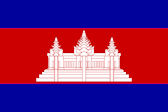
Ieng Sary (អៀង សារី, 1932- ); Schwerstverbrecher und ehemaliger Außenminister der Roten Khmer, lauft mit ca. 10.000 Anhängern zur Regierung über. König Sihanouk (នរោត្តម សីហនុ, 1922 -2012) amnestiert ihn.
Abb.: Ieng Sary (អៀង សារី), 2011
[Bildquelle: Extraordinary Chambers in the Courts of Cambodia. -- http://www.flickr.com/photos/krtribunal/6458090877/. -- Zugriff am 2013-01-26. -- Creative Commons Lizenz (Namensnennung, share alike)]
1996-08-10
Tod von Bunleua Sulilat (บุญเหลือ สุรีรัตน์, 1932 - 1996).
Abb.: Bunleua Sulilat (บุญเหลือ สุรีรัตน์)
[Bildquelle: Sala Keoku / Wikipedia. -- GNU FDLicense]
Abb.: Sala Keoku (ศาลาแก้วกู่), Nong Khai (หนองคาย), 2005
[Bildquelle: Jpatokal / Wikimedia. -- GNU FDLicense]
Abb.: Lage von Nong Khai (หนองคาย)
[Bildquelle: OpenStreetMap. -- Creative Commons Lizenz (Namensnennung, share alike)]
"Bunleua Sulilat (June 7, 1932 - August 10, 1996, often referred to as Luang Pu Bunleua Sulilat, Thai: หลวงปู่บุญเหลือ สุรีรัตน์ [luəŋ puː bunlɯːə suliːlat], numerous variants of the spelling exist in Western languages: see below) was a Thai/Isan/Lao mystic, myth-maker, spiritual cult leader and sculpture artist. He is responsible for creating two religious-themed parks featuring giant fantastic sculptures made of concrete on the banks of the Mekong river near Thai-Lao border: Buddha Park (วัดเซียงควน) on the Lao side (25 km southeast from Vientiane - ວຽງຈັນ), and Sala Keoku (ศาลาแก้วกู่) on the Thai side (3 km east of Nong Khai - หนองคาย). Biography
Bunleua Sulilat was born in 1932 as the seventh of eight children to a family in Nong Khai province (หนองคาย), Thailand. According to a legend, as a young man, he fell into a cave and thus met hermit Keoku (แก้วกู่), his spiritual mentor, after whom Sala Keoku (The Hall of Keoku) is named.
Upon graduating from his apprenticeship with Keoku, Sulilat took on monumental sculpting, and proceeded with the construction (in 1958) of his first concrete sculpture garden, Buddha Park near Vientiane, Laos. Concerned about the political climate in Laos after the 1975 communist revolution, Sulilat crossed Mekong fleeing to Thailand. In 1978, he commenced the construction of a new sculpture garden, Sala Keoku, located across the river from the old one.
Sulilat's eccentric and captivating personality and the blend of Buddhism and Hinduism he professed proved to hold great appeal to some of the locals, and Sala Keoku became something of a religious sect headquarters. The title Luang Pu (usually reserved for monks) came to be applied to Sulilat, who was technically a secular man. Both of the parks were constructed from donated concrete by hundreds of unskilled enthusiasts working without payment. Some other residents of the area considered Sulilat to be insane.
In his later years, Sulilat suffered a fall from one of his giant sculptures. Subsequently, his health deteriorated (the precise relation of his illness to the fall is unclear; he appears to have suffered from some blood disease), and he died in 1996. His mummified body has been preserved on the 3rd floor of the Sala Keoku pavilion building.
Style and visionSulilat's sculpture gardens rely upon the rich religious art tradition of the region. What sets them apart is the uncommonly large physical dimensions (made possible through the use of modern construction materials), highly individualized (and even quirky) artistic fantasy, and sporadic contemporary references (motorized vehicles, firearms, Western garments).
Having been erected by unskilled workforce, the gardens present fine specimens of art naïf and art brut, and they certainly do possess the characteristic childish spontaneity and sense of wonder. (Sulilat claimed not to have had any artistic experience prior to the construction of Buddha Park.) Yet, once again, the monumental scale of the projects and the long-term, communal, organized nature of construction are quite remarkable for the realm of outsider art.
Reportedly, concrete has been chosen by Sulilat as the cheapest and most accessible material for his artwork. A large number of cement factories exist on the Lao side of Mekong. The statues have been designed by Sulilat himself, and subsequently built using (mostly) unpainted concrete reinforced with metal. Larger installations rely upon brick support structures in the interior.
Some parallels may be found between Sulilat's parks and the large-scale culture projects by Lek Viriyaphant (ประไพ วิริยะพันธุ์, 1914 - 2000), in particular, the fantastic woodcarving compositions of the Sanctuary of Truth (ปราสาทสัจธรรม). However, the latter have been designed and implemented on another financial scale with a large input of professional labor. So, compared to Sulilat's heritage, a very different balance between skilled finesse and immediate individual artistic expression is maintained in those projects. (Wat Rong Khun - วัดร่องขุ่น is another example of a contemporary unconventional Thai Buddhist art site.)
The didactic nature of Sulilat's vision found its most detailed expression in depictions of the karmic Wheel of Life present in the both of his gardens. The version in Sala Keoku is the more elaborate of the two. Mixing traditional and contemporary figures arranged in a circular pattern, it reveals the human progression from birth to death, which returns to its own origin. The composition culminates as a young man takes a step across the fence enclosing the entire installation to become a Buddha statue on the other side.
SpellingsDue to the lack of standard romanization scheme for Thai and Lao, there is a profusion of different spellings for Bunleua Sulilat's name, as well as the names of his parks, to the extent that makes all of them virtually impossible to account for.
Thus, Sulilat's first name has been spelled as Bunleua, Bounleua, Bun Leua, Boun Leua, Boon Leua, Bounlua, Bounlour, Boonlour, Bunluea, etc.
His last name has been spelled as Sulilat, Surirat, Soulilat, Sourirat, Sureerat, Su Ree Rat, etc.
The title Luang Pu has also been spelled as Luang Puu, Luang Pa, Louang Pou, Loungpou, etc.
Buddha Park is also known as Wat Xiengkhouane, Wat Xieng Khouan, Wat Xiengkhuan, Wat Xieng Khuan, Vat Xiengkhuane, etc.
Sala Keoku has also been referred to as Sala Keo Ku, Sala Keo Koo, Sala Keo Kou, Sala Kaew Ku, Sala Kaew Koo, Salakaewkoo, Sala Gaew Goo, Sala Kaeoku, Sala Kaeo Ku, etc. It is also known as Wat Khaek.
References
- John Maizels, Deidi von Schaewen (photo), Angelika Taschen (ed.), Fantasy Worlds, Taschen (2007), pp. 218–221.
- John Maizels (ed.), Raw Vision Outsider Art Sourcebook, Raw Vision Ltd (2002), pp. 98–99."
[Quelle: http://en.wikipedia.org/wiki/Luang_Pu_Bunleua_Sulilat. -- Zugriff am 2012-04-05]
"Sala Kaeo Ku (alternative Schreibweise Sala Keo Kuu oder Sala Keoku, Thai: ศาลาแก้วกู่ - [sǎːlaː kɛ̂ːo kùː]; auch Wat Khaek, Thai: วัดแขก) ist eine Parkanlage nahe Nong Khai, einer Provinz-Hauptstadt am Ufer des Mekong in Nordost-Thailand. Der Park liegt etwa fünf Kilometer östlich der Stadt, der erste Eindruck, man stehe einem im Dschungel versunkenen Tempel gegenüber, täuscht. Tatsächlich handelt es sich um einen Garten mit skurrilen Beton-Skulpturen, der gegen Ende der 1970er von Luang Pu Bunleua Sulilat (Thai: หลวงปู่บุญเหลือ สุรีรัตน์), einem thailändisch-laotischen Schamanen geschaffen wurde - einem „Verrückten“, wie die Bewohner des Provinzstädtchens schmunzelnd erzählen.
Die teils über 20 Meter hohen Skulpturen sind der reichen Phantasie von Luang Pu entsprungen, sie stellen Szenen aus dem Leben des Buddha sowie zahlreiche Figuren aus der hinduistisch-buddhistischen Götterwelt und Mythologie dar, die übergroßen, länglichen Köpfe erinnern an die Moais der Osterinsel.
Die wohl eindrucksvollste Statue zeigt den meditierenden zukünftigen Buddha, wie er von einer siebenköpfigen Naga vor einem Gewittersturm beschirmt wird. Auch eine riesige Statue des Dämonen Rahu aus der hinduistischen Mythologie ist hier zu sehen sowie eine Gruppe von Skulpturen, die das Rad des Lebens buchstäblich begehbar und erlebbar machen.
Zur exotischen Atmosphäre trägt die elektronische, Avantgarde- und Pop-Musik bei, die manchmal über die parkeigene Beschallungsanlage wiedergegeben wird."
[Quelle: http://de.wikipedia.org/wiki/Sala_Kaeo_Ku. -- Zugriff am 2012-04-05]
1996-08-17
Bangkok Post: Ein Parlamentsabgeordneter der beschuldigt Banharn Silpa-archa (บรรหาร ศิลปอาชา, 1932 - ), dass er den Löwenanteil des Budgets für seine Heimatprovinz Suphan Buri (สุพรรณบุรี) abzweigt: "How could Suphan Buri be more important than Udon Thani [อุดรธานี], Khon Kaen [ขอนแก่น], or Maha Sarakham [มหาสารคาม]?"
Abb.: Lage der genannten Provinzen
Bildquelle: [Bildquelle: CIA. -- Public domain]
1996-09-11
Gemäß The Nation antworteten bei einer Umfrage in Bangkok zum Umweltschutz:
85 der jungen Beantworter, dass für sie Umweltschutz wichtiger ist als wirtschaftliche Entwicklung
85 aller Altersgruppen, dass sie eine Umweltsteuer als akzeptabel ansehen.
1996-09-13 - 1996-09-21
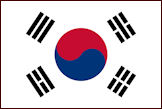
Erstes Busan International Film Festival (부산국제영화제) in Busan/Pusan (부산광역시), Südkorea
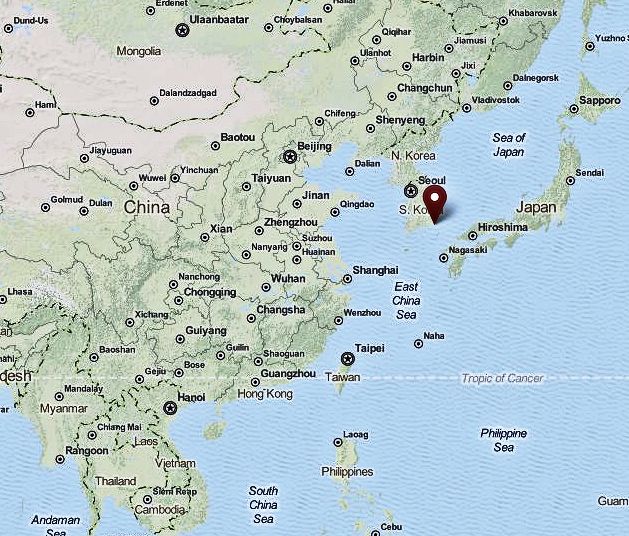
Abb.: Lage
von Busan (부산광역시)
[Bildquelle: OpenStreetMap. --
Creative
Commons Lizenz (Namensnennung, share alike)]
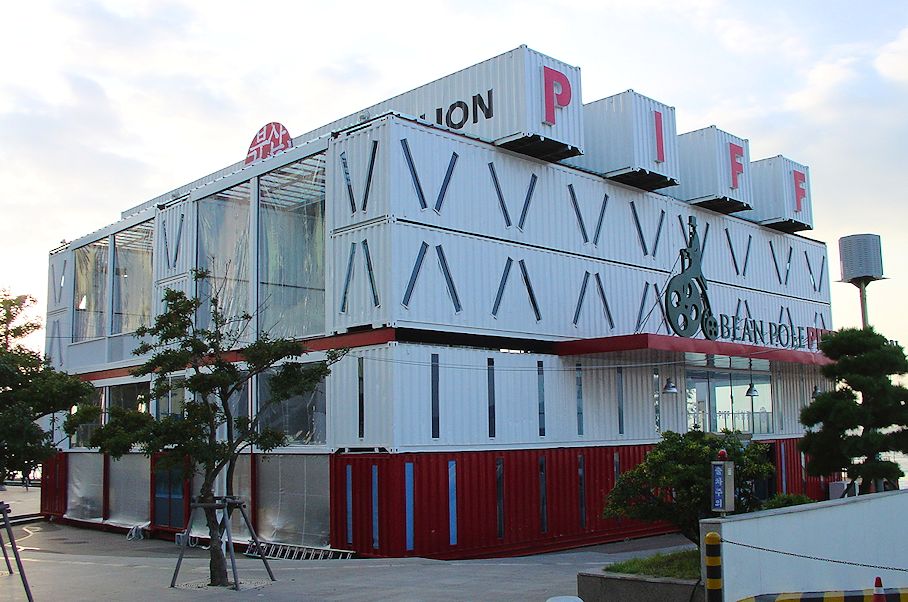
Abb.: PIFF
(Pusan International Film Festival) Pavillon, Busan (부산광역시), 2007
[Bildquelle: Hyoung Won Park. --
http://www.flickr.com/photos/dalcrose/1516408074/.
-- Zugriff am 2013-04-21. --
Creative Commons
Lizenz (Namensnennung, keine kommerzielle Nutzung, share alike)]
|
"Das Busan International Film Festival (BIFF, ehemals Pusan International Film Festival) findet jährlich in Busan (부산광역시), der zweitgrößten Stadt Südkoreas, statt und zählt zu den bedeutendsten Filmfestivals in Asien. Das erste Festival fand im September 1996 statt und war das erste internationale Filmfestival in Korea. Es wurden 173 Filme aus 31 Ländern gezeigt. Seitdem wurde das Festival jährlich veranstaltet und steigerte die Anzahl der Filme kontinuierlich auf 307 aus 37 Ländern im Jahr 2005.
Der Hauptpreis des internationalen Wettbewerbs ist der New Currents Award für den besten neuen Film eines asiatischen Regisseurs. Er ist mit USD 30.000,- dotiert. Das Festival ist beim Filmproduzentenverband FIAPF als internationales Filmfestival mit spezialisiertem Wettbewerb akkreditiert, wobei sich diese Spezialisierung auf neue asiatische Filme bezieht. Der Korean Cinema Award hingegen geht nicht etwa an einen koreanischen Regisseur, sondern an nicht-koreanische Personen, die sich um die Förderung des koreanischen Films im Ausland verdient gemacht haben. Daneben werden in Busan noch andere Auszeichnungen vergeben, darunter eine für den asiatischen Filmemacher des Jahres und der FIPRESCI-Preis. Das Pusan International Film Festival hat auch einen großen Filmmarkt für asiatische Filme. Seit 2005 findet im Rahmen des Festivals die Asian Film Academy statt, die drei Wochen lang jungen Filmschaffenden aus ganz Asien offen steht. 2005 gewann das österreichischen Architekturbüro Coop Himmelb(l)au die Ausschreibung zur Errichtung des Busan Cinema Centers als neuem Festivalzentrum." [Quelle: http://de.wikipedia.org/wiki/Busan_International_Film_Festival. -- Zugriff am 2013-04-21] |
1996-09-30

Nach 46 Jahren Tätigkeit in Thailand schließt USAID (United States Agency for International Development) ihre Niederlassungen in Thailand. Die Tätigkeit wird fortgesetzt durch die NGO Kenan Institute of Asia (KIA, สถาบันคีนันแห่งเอเซีย).
Abb.: ®EmblemTätigkeiten von USAID von 1950 - 1995 sind u.a.
über 11.000 Thais werden in den USA aus- und weitergebildet
über 100.000 Thais werden in Thailand aus- und weitergebildet
Bau des Friendship Highway Bangkok - Korat (โคราช) - Udon (อุดรธานี)
Bau des Phitsanulok (พิษณุโลก) - Lomsak (หล่มสัก) Highway
Bau von 3.000 km Allwetterstraßen in Nordostthailand
Bau von 25.000 km Behelfsstraßen in Nordostthailand
Finanzierung von Familienplanungsprogrammen
Saatgutverbesserung von Reis, Mais, Sorghum, Erdnuss, Mung-Bohnen, Soyabohnen
Abb.: ®Logo
"Kenan Institute Asia (K.I.Asia), the operational name for the Kenan Foundation Asia, is a leading Thailand based non-profit organization which serves the sustainable development needs of the Greater Mekong Subregion (Cambodia, Lao PDR, Myanmar, Thailand,Yunnan Province in southern China), and Vietnam. Founded in 1996, K.I.Asia works to address the challenges facing South East Asia through free enterprise mechanisms, boundary-spanning partnerships and expertise gained through practical development experience. The organization specializes in designing, managing and implementing programs in five main areas: public health; youth development and innovative education; entrepreneurship; sustainable tourism; business and economic development; and Corporate Social Responsibility.
HistoryEvolving from a project funded by the [United States Agency for International Development]] (USAID) mission in Thailand, K.I.Asia was founded in 1996 with an endowment provided by USAID, the Thai government, the William R. Kenan, Jr. (1872–1965) Charitable Trust and the Frank Hawkins Kenan Institute of Private Enterprise, part of the Kenan-Flagler Business School at the University of North Carolina at Chapel Hill. With former Prime Minister Anand Panyarachun (อานันท์ ปันยารชุน, 1932 - ) serving as the founding chairman, the Institute initially focused on fostering development partnerships between U.S. and Thai organizations based on the belief that challenges facing South East Asia could best be addressed through free enterprise mechanisms, boundary-spanning partnerships and expertise gained through practical development experience.
Within its first few months of its existence, K.I.Asia was faced with responding to the 1997 Asian financial crisis. It did so through the American Corporations for Thailand (ACT) Program, launched in 1998 chaired by former Prime Minister of Thailand and the then-current K.I.Asia chairman Mr. Anand Panyarachun and Dr. Henry Kissinger (1923 - ), former U.S. Secretary of State. The project worked with major U.S. companies in Thailand to support human resource development, retraining those left unemployed by the crisis. Ten donor companies and organizations contributed US $1.1 million for ACT’s first three years. The donors provided another $700,00 for the project in 2001 to expand the program to include secondary and environmental education. In total, ACT awarded over 50 grants on a competitive basis to Thai universities, non-profit and government training organizations throughout the country, training approximately 700 trainers and 2,700 trainees.[1]
In 1999 the U.S. government provided K.I.Asia with a cost-shared grant for a program of economic recovery and reform for Thailand called "Accelerating Economic Recovery in Asia" (AERA) as part of the Thailand Competitiveness Initiative, with a specific focus on development of cluster competitiveness.[2] The project had three objectives: 1) creating and saving jobs, 2) improving the targeting and coverage of safety nets, and 3) improving economic governance. The institute worked towards these goals through technical assistance and training complementing ongoing structural adjustment loans funded by the International Monetary Fund or multilateral development banks. Partnering with a wide variety of local organizations, the program had significant impact, particularly in the areas of competitiveness, economic governance, financial and corporate debt restructuring.[3] The program was renewed several times to implement projects that ranged from cross-border public health cooperation to trade capacity building for small companies. By the time it was concluded in 2008, AERA had supported development projects with more than $25 million in USAID funds along with more than an equal amount of cash and in-kind donations made by the Thai government and other Thai organizations.
When the 2004 tsunami devastated the coast of southern Thailand, K.I.Asia implemented the Tsunami Recovery Action Initiative (TRAI), with core funding provided by the William R. Kenan Charitable Trust and the Frank Hawkins Kenan Institute of Private Enterprise along with a variety of smaller donors. With program funding continuing into 2010, TRAI implemented sustainable development based on environmentally and socially friendly tourism. It worked with local government, villages and professional associations to help local people make decisions on the type of tourism they wanted to see thrive. It helped local communities develop the capacity to plan and implement small eco-tourism businesses and to protect the seashore and forest environments that were the main tourism attraction in the area. Total funding, from a variety of donors totaled more than $2 million.
Today, K.I.Asia’s team of professionals draws upon the expertise and experience gained over more than a decade of activities to support sustainable development throughout Southeast Asia, with a special emphasis on Thailand, Cambodia, Lao PDR and Vietnam."
[Quelle: http://en.wikipedia.org/wiki/Kenan_Institute_Asia. -- Zugriff am 2015-04-26]
1996-10-01 - 1998-09-30
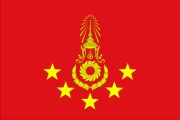
General Chettha Thannajaro (พลเอก เชษฐา ฐานะจาโร, 1938 - ) ist Commander-in-Chief of the Royal Thai Army (ผู้บัญชาการทหารบก).
Abb.: Chettha Thannajaro (พลเอก เชษฐา ฐานะจาโร)
[Bildquelle: th.Wikipedia. -- Fair use]
1996-10-06
Zum 20. Jahrestag des Massakers von 1976-10-06 erscheint das Album:
เพื่อนเดือนตุลา [Oktober-Freunde] / von Jim Kammachon (จิ้น กรรมาชน = Kulsak Reuangkhongkhiat - กุลศักดิ์ เรืองคงเกียรติ) und der Kammachon Band. -- Das Album ist eine Neuauflage von เพื่อนมาตุภูมิ [Freunde des Mutterlandes] von 1989-10 plus fünf neuen Songs.
Abb.: Cover
[Fair use]In einer Ansprache bildet Seksan Prasertkul (เสกสรรค์ ประเสริฐกุล, 1949 - ) den Begriff Oktobristen (คนเดือนตุลา) als Sammelbegriff für die Studentenrebellen im Oktober 1973 und Oktober 1976.
1996-10-12


Die USA enttarnen einen großen Heroin-Schmuglering. Er wird von Nigerianern von Bangkok aus betrieben und schickt Heroin via Europa und Mexiko in den Mittleren Westen der USA.
Abb.: Lage von Nigeria
[Bildquelle: OpenStreetMap. -- Creative Commons Lizenz (Namensnennung, share alike)]
1996-10-14 - 1996-11-06
Da trotz Versprechens der Regierung noch viele der im "Village of the Poor" (หมู่บ้านคนจน) 1996-03-25 bis 1996-04-23 vorgebrachten 47 Probleme nicht bearbeitet wurden, demonstriert die Assembly of the Poor (สมัชชาคนจน) ein zweites Mal.
1996-10-14 - 1996-10-1
Chiang Mai (เชียงใหม่): 6th International Conference on Thai Studies,
Dort äußert sich u.a. eine Lesbenaktivistin zur Behandlung von Homosexuellen:
"Social sanctions against homosexual behavior in Thailand do not usually take the official, legal forms found in the West (see Jackson 1995, 1999b; Kittisak 1993). Toms [ทอม] and dees [ดี้] have described feeling that people malign them behind their back. Likewise, this oblique criticism exacted grievous retribution from its targets. Gossip and innuendo can be brutalizing in a society in which social appearance and "face" are highly valued.7 At the 1996 International Thai Studies Conference in Chiang Mai, a Thai lesbian activist spoke to the audience during a panel discussion of lesbians in Thailand:
"Thai society looks like it is tolerant, but it is really an ignorant society more than a tolerant one. Deep down, behind the smiles, people talk about you, and that kills too. There is no pride in being gay; you are just abnormal.""
[Quelle: Sinnott, Megan J.: Toms and dees : transgender identity and female same-sex relationships in Thailand. -- Honolulu : University of Hawaii Pr., 2004. -- 261 S. : Ill. ; 24 cm. -- ISBN 0824828526. -- Zugl. Diss., Univ. of Wisconsin - Madison, 2002. -- S. 145]
Über die Einstellung mancher Teilnehmer zu Anjaree (อัญจารี), einem Verein homosexueller Frauen:
"An example of the struggle between Anjaree [อัญจารี] and the authoritative discourses occurred during the 1996 International Thai Studies Conference. Anjaree’s central figure, Anjana Suvarnananda [อัญชนา สุวรรณานนท์], introduced the organization and its objectives in a panel discussion at the conference. She outlined the extensive misunderstandings, prejudices, and stereotypes that homosexual women in Thai society face. During the question-and-answer period at the end of her talk, a professor of psychology at Thammasat University [มหาวิทยาลัยธรรมศาสตร์] asked her what to do to "help" toms [ทอม]. The professor said several had come to her and she had helped them to "become normal" so they would "not be forced to be toms" The professor insisted it was "better of course to be normal" and that being a tom was just the result of "negative environmental factors." Anjana took a deep breath and answered respectfully, "Thank you for your contribution. This is a good example of a typical middle-class attitude."" [Quelle: Sinnott, Megan J.: Toms and dees : transgender identity and female same-sex relationships in Thailand. -- Honolulu : University of Hawaii Pr., 2004. -- 261 S. : Ill. ; 24 cm. -- ISBN 0824828526. -- Zugl. Diss., Univ. of Wisconsin - Madison, 2002. -- S. 168f.]
1996-10-21
Erstausgabe der Tageszeitung Thai Post (ไทย โพสต)
Abb.: Thai Post (ไทย โพสต). -- 2556-04-25 [= 2013-04-25]
1996-10-25
Der Feinstaubpartikel-Gehalt der Luft in Bangkok liegt 50 bis 100% über den zulässigen Grenzwerten. Atemwegerkrankungen nehmen zu. Vermutlich 1 Mio. Bangkoker haben wegen der Luftverschmutzung Allergien.
Abb.: Feinstaub-Gehalt der Luft in Bangkok, 1992 - 2006
[Bildquelle: http://www.unhabitat.org/downloads/docs/presskitsowc2008/Bankok%20strategy.pdf. -- Zugriff am 2011-12-21]
Abb.: Smog über Bangkok, 2006
[Bildquelle: Josh Fisher. -- http://www.flickr.com/photos/joshfisher/89261161/. -- Zugriff am 2012-01-27. -- Creative Commons Lizenz (Namensnennung, keine kommerzielle Nutzung, share alike)]
1996-10-27
Tod von Rewat 'Ter' Buddhinan (เรวัติ พุทธินันทน์ "เต๋อ", geb. 1848), dem Gründer von GMM Grammy.
Künstlerlink auf Spotify:
URI: spotify:artist:0F0R6OCiVX2feplYsp5hhV
URL: https://open.spotify.com/artist/0F0R6OCiVX2feplYsp5hhV
Abb.: Rewat 'Ter' Buddhinan (เรวัติ พุทธินันทน์ "เต๋อ")
[Bildquelle: th.Wikipedia. -- Fair use]
"Rewat 'Ter' Buddhinan (Thai: เรวัติ พุทธินันทน์ "เต๋อ") (September 5, 1948 - October 27, 1996) was a pioneer in the Thai pop music industry. An ex-singer with The Impossibles band, he used the Thai language in rock music during the 1970s. Founder of the GMM Grammy (จีเอ็มเอ็ม แกรมมี่), Buddhinan is considered to have made such changes in the music industry of his native country that he ushered in a new era."
[Quelle: http://en.wikipedia.org/wiki/Rewat_Buddhinan. -- Zugriff am 2012-06-12]
1996-10-28

Queen Elizabeth the Second, by the Grace of God Queen of this Realm and of Her other Realms and Territories, Head of the Commonwealth, Defender of the Faith mit ihrem Gatten His Royal Highness The Prince Philip, Duke of Edinburgh, Earl of Merioneth, Baron Greenwich, Royal Knight of the Most Noble Order of the Garter, Knight of the Most Ancient and Most Noble Order of the Thistle, Grand Master and First and Principal Knight Grand Cross of the Most Excellent Order of the British Empire, Member of the Order of Merit, Companion of the Order of Australia, Extra Companion of the Queen's Service Order, Royal Chief of the Order of Logohu, Canadian Forces Decoration, Lord of Her Majesty's Most Honourable Privy Council, Privy Councillor of the Queen's Privy Council for Canada, Personal Aide-de-Camp to Her Majesty weilen zu einem fünftägigen Staatsbesuch in Thailand. Die Queen nennt König Bhumibol "brother" und preist Thailands "confident democracy".
Abb.: Queen Elizabeth II. mit Gatten, 1992
[Bildquelle: Jirka, Marie-Josefine. -- Bundesarchiv, Bild 199-1992-089-19A / CC-BY-SA]Ministerpräsident Banharn Silpa-archa (บรรหาร ศิลปอาชา, 1932 - ) nennt die Queen irrtümlich "Queen Elizabeth Taylor".
Abb.: Eine peinliche Verwechslung: Elizabeth Rosemond "Liz" Taylor (1932 - 2011), 1954
[Bildquelle: Wikimedia. -- Public domain]Die Queen besucht in Thailand u.a. eine Rolls-Royce-Ausstellung.
1996-10-29
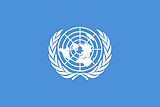
Thailand tritt dem ICCPR-International Covenant on Civil and Political Rights der UNO bei. Der Pakt war von der UNO 1966-12-16 beschlossen worden.
1996-11-02
Thailands Einwohnerzahl steigt auf 60 Millionen.
1996-11-05

Bill Clinton (1946 - ) wird als US-Präsident wiedergewählt.
Abb.: Bill Clinton im Kreise seiner Familie
[Bildquelle: Wikimedia. -- Public domain]
1996-11-05

Der US-Musiker Michael Jackson (1958 - 2009) tritt auf seiner HiStory World Tour im IMPACT Muang Thong Thani (อิมแพ็ค เมืองทองธานี) in Bangkok auf.
Künstlerlink auf Spotify:
URI: spotify:artist:3fMbdgg4jU18AjLCKBhRSm
URL: https://open.spotify.com/artist/3fMbdgg4jU18AjLCKBhRSm
Abb.: Michael jackson HIStory Statue, Eindhoven (Niederlande), 2005
[Bildquelle: Sjors Provoost. -- http://www.flickr.com/photos/21225669@N00/214007159. -- Zugriff am 2013-06-04. -- Creative Commons Lizenz (Namensnennung)]
1996-11-17

Wahlen. PollWatch beobachtet starken Stimmenkauf. Daneben kommen die üblichen korrupten Praktiken in Anwendung.
Abb.: Sitzverteilung nach den Wahlen 1996
"General elections were held in Thailand on 17 November 1996. The result was a victory for the New Aspiration Party, which won 125 of the 393 seats, despite winning fewer votes than the Democrat Party. Voter turnout was 62.4%.[1] Results
Party Votes % Seats +/- Democrat Party (พรรคประชาธิปัตย์) 18,087,006 31.8 123 +37 New Aspiration Party (พรรคความหวังใหม่) 16,585,528 29.1 125 +68 National Development Party (พรรคชาติพัฒนา) 7,044,304 12.4 52 -1 Thai Nation Party (พรรคชาติไทย) 5,621,890 9.9 39 -53 Social Action Party (พรรคกิจสังคม) 3,036,544 5.3 20 -2 Thai Citizen Party 2,330,135 4.1 18 0 Phalang Dharma Party (พรรคพลังธรรม) 1,550,170 2.7 1 -22 Solidarity Party 1,011,299 1.8 8 0 Liberal Party 708,430 1.2 4 -7 Mass Party 680,204 1.2 2 -1 Thai Party 164,464 0.3 1 New Liberal Democracy Party 56,804 0.1 0 New Labour Party 40,798 0.1 0 New Invalid/blank votes 632,502 - - - Total 24,070,750 100 393 +2 Source: Nohlen et al [Quelle: http://en.wikipedia.org/wiki/Thai_general_election,_1996. -- Zugriff am 2011-11-04]
1996-11-22 - 1996-12-06

Im Ersten Deutschen Fernsehen läuft die zweite Staffel der Serie "Klinik unter Palmen". Diese Staffel spielt in Thailand.
1996-11-23
Premiere des Films เสียดาย 2 ("Daughter 2") von Chatrichalerm Yukol (หม่อมเจ้าชาตรีเฉลิม ยุคล, 1942 - )
Abb.: Filmplakat
[Bildquelle: th.Wikipedia. -- Fair use]
1996-11-25 - 1997-11-09
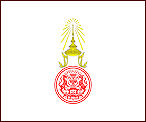
General Chavalit Yongchaiyudh (ชวลิต ยงใจยุทธ, 1932 - ) ist Ministerpräsident (นายกรัฐมนตรีแห่งราชอาณาจักรไทย - Prime Minister). Chavalit ist mit einer Indonesierin verheiratet, die das Malaiisch der muslimischen Südprovinzen spricht.
Abb.: ชวลิต ยงใจยุทธ - General - Chavalit Yongchaiyudh
[Bildquelle: Wikipedia. -- Public domain]
"Chavalit Yongchaiyudh (Thai: ชวลิต ยงใจยุทธ, Aussprache: [ʨʰáwálít joŋʨajjút]; * 15. Mai 1932 in Nonthaburi) ist ein thailändischer Politiker, General und ehemaliger Premierminister von Thailand. Den Bewohnern Südthailands ist er auch als "Big Jiew" bekannt.[1] Chavalit erhielt seine Ausbildung an der Triam Suksa Udorn-Schule (einer Vorbereitungsschule für das Universitätsstudium) und machte 1949 seinen Abschluss an der Kadettenakademie Chula Chom Klao. Anschließend ging er in die USA an die Army Communication School, Fort Bournemouth. Später wurde er im 9. Armeeregiment auf Okinawa (Ryukyu, Japan weiter ausgebildet. Danach besuchte er die thailändische Army Communication School und das General Staff College in Thailand.
Er diente seit 1954 zunächst in der thailändischen Armee als Unterleutnant und wurde 1963 als Zugführer der Instandhaltungstruppe der Armee eingesetzt. 1971 wurde Chavalit zum Chef der Army Operations Division ernannt und 1985 zum Generaldirektor des Army Operations Department.
1986 stieg er zum Generalstabschef der Armee auf und wurde im gleichen Jahr Oberkommandierender der Armee, im Jahr darauf Chef des Obersten Hauptquartiers des Landes.
Chavalit selbst ist kein Muslim, ist aber mit einer muslimischen Indonesierin verheiratet und war daher lange mit der von Wan Noor gegründeten Wahdah-Lobby verbunden.
Chavalit begann seine politische Karriere als stellvertretender Premierminister und Verteidigungsminister 1988 während der Regierung von General Chatichai Junhavan. Zwischen 1992 und 1994 war er Innenminister, zwischen 1995 und 1996 erneut stellvertretender Premierminister und Verteidigungsminister.
Am 17. November 1996 gewann die New Aspiration Party, deren Parteichef Chavalit war, die allgemeinen Parlamentswahlen. Chavalit bildete eine Koalition aus sechs Parteien und wurde am 25. November 1996 von König Bhumibol Adulyadej (Rama IX.) zum Premierminister ernannt. Am 6. November 1997 musste er auf Druck zahlreicher Kräfte zurücktreten, unter anderem wegen der desolaten wirtschaftlichen Lage des Landes nach der Währungskrise.
Chavalit war in der Regierung Thaksin Shinawatra Minister für innere Sicherheit und stellvertretender Premierminister. Im September 2008 wurde Chavalit als stellvertretender Premierminister in die Regierung Somchai Wongsawats berufen, trat aber wenige Wochen später nach schweren Ausschreitungen bei Protesten gegen die thailändische Regierung in Bangkok von seinem Posten zurück.[2]
Nach dem Putsch von 2006 und Sturz Thaksins war dessen Thai-Rak-Thai-Partei (TRT) auseinandergebrochen und ebenso wie ihre Nachfolgepartei verboten worden. Nachdem er eine Mitarbeit in der muslimischen, aber dem Putschistenführer Sonthi Boonyaratglin nahestehenden Matubhum-Partei abgelehnt hatte[3], trat Chavalit im Oktober 2009 der Pheu-Thai-Partei, einer anderen TRT-Nachfolgepartei, bei und wurde auf Betreiben Thaksins zum Parteivorsitzenden gewählt.[4] Chavalit will die Partei jedoch maximal bis zu den nächsten Wahlen führen.[5]
Einzelnachweise
- ↑ Bangkok Post, 4.November 2009: 'Big Jiew' plays Muslim card
- ↑ Die Welt: Thailands Vize-Ministerpräsident tritt zurück vom 8. Oktober 2008.
- ↑ Bangkok Post, 18. September 2009: Chavalit won’t work with coup leader
- ↑ NNT, 27. Oktober 2009: Gen Chavalit appointed as Puea Thai Chairperson
- ↑ Bangkok Post vom 29. Dezember 2009: Chavalit won’t lead Puea Thai"
[Quelle: http://de.wikipedia.org/wiki/Chavalit_Yongchaiyudh. -- Zugriff am 2011-10-06]
1996-11-25 - 1997-11-09
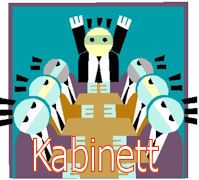
53. Kabinett: Chavalit (ชวลิต)
1996-11-25

US-Präsident Bill Clinton weilt zu einem 27-Stunden-Staatsbesuch in Thailand. Es ist der erste Staatsbesuch eines US-Präsidenten seit Richard Nixons Besuch 1969. Clinton lobt Thailand, da es zeige, dass Demokratie [sic!] und wirtschaftliches Wachstum miteinander vereinbar sind.
Abb.: Bill Clinton freut sich über die Demokratie in Thailand, 2009/2011
[Bildquelle: DonkeyHotey, Bearbeitung eines Fotos von Kate Wellington. -- http://www.flickr.com/photos/donkeyhotey/6358422543/. -- Zugriff am 2011-12-21. -- Creative Commons Lizenz (Namensnennung)]
1996-11-26

In Gegenwart von US-Präsident Clinton wird ein Doppelbesteuerungsabkommen USA-Thailand unterzeichnet.
1996-12

Zur Feier des 50-jährigen Thronjubiläums erhält der König als Geschenk den größten geschliffenen Diamanten der Welt, den Golden Jubilee Diamond (เพชรกาญจนาภิเษก). Wert: 4 - 12 Mio. US$.
"The Golden Jubilee Diamond is the largest cut and faceted diamond in the world. It weighs 545.67 carats (109.13 g). It outweighs the Cullinan I by 15.37 carats (3.07 g). The Golden Jubilee Diamond was discovered in the Premier Mine (South Africa), which is also the origin of the Cullinan diamond (1905) and other notables such as the Taylor-Burton (1966) and the Centenary (1986). The Cullinan I, also known as the Great Star of Africa, had held the title of the largest cut and faceted diamond since 1908. The diamond is valued at 4–12 million US dollars.
HistoryThe Golden Jubilee Diamond was cut from a large brown diamond of 755.5 carats (151 g), found in the prolific blue ground of the Premier Mine in South Africa in 1985. First known as the "Unnamed Brown," the Golden Jubilee was given to Gabriel Tolkowsky (1939 - ) by De Beers for the purpose of testing special tools and cutting methods that had been developed for use on the colourless D-colour Centenary.
Because of its deep cracks and several inclusions, the Golden Julilee Diamond was cut in a specially designed underground room free from vibrations. The yellow-brown diamond was transformed through a fire rose cushion cut. Until 1990, the diamond remained largely unknown to the outside world, requiring two years to bring it to its current state.[2]
The unnamed diamond was brought to Thailand by the Thai Diamond Manufacturers Association to be exhibited in the Thai Board of Investment Exhibition in Laem Chabang (แหลมฉบัง) and was selected to herald De Beer's centennial celebrations in 1988.
The Golden Jubilee was purchased from De Beers by a group led by Henry Ho of Thailand in 1995.
BlessingsThe diamond was brought to Pope John Paul II (1920 - 2005) in the Vatican to receive a Papal blessing. It was also blessed by the Supreme Buddhist Patriarch (สังฆราช) and the Supreme Imam in Thailand.
The diamond (Thai: เพชรกาญจนาภิเษก) was named by King Bhumibol Adulyadej and given to him in honor of his 50th coronation anniversary. It was initially planned to mount the Golden Jubilee in the royal scepter. A subsequent plan was to mount it in a royal seal.[3]
ExhibitionsThe Golden Jubilee Diamond has been exhibited at Henry Ho's 59-story Jewelry Trade Center (จิวเวอร์รี่ เทรด เซ็นเตอร์) in Bangkok, the Central Department Store in Lad Prao (เซ็นทรัลลาดพร้าว) (Bangkok) Thailand, and internationally in Basel (Switzerland), Borsheims in Omaha, NE, USA (owned by Warren Buffett's Berkshire Hathaway Inc.), and Gleims Jewelers in Palo Alto, California. It is now located in the Royal Thai Palace as part of the crown jewels."
[Quelle: http://en.wikipedia.org/wiki/Golden_Jubilee_Diamond. -- Zugriff am 2014-11-03]
1996-12
Comedy cafés werden in Bangkok trendy. Pionier diese Trends ist Boonliang Adulrittikul (บุญเลี้ยง อดุลฤทธิกุล, - 1998), Besitzer des Villa Café (วิลล่า คาเฟ่). Das Auftreten von Komödianten in Cafés ist so erfolgreich, dass zwei solche Cafés ihre Shows im staatlichen Fernsehen zeigen.
1996-12-01

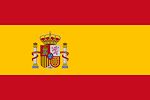
Zur Feier des 50-jährigen Thronjubiläums gibt der spanische Tenor José Carreras (1945 - ) im Oriental Hotel in Bangkok ein Konzert. Die Königin ist anwesend.
Künstlerlink auf Spotify:
URI: spotify:artist:1ahGKezyX9Rl7GuEF2tc15
URL: https://open.spotify.com/artist/1ahGKezyX9Rl7GuEF2tc15
1996-12-09
Es erscheint:
Nantiya Tangwisutijit [นันทิยา ตั้งวิสุทธิจิต]: New resort 'poses treat' to wildlife. -- In: The Nation <Bangkok>. -- 1996-12-09
Berichtet über ein Stück Strand in Khao Sam Roi Yot National Park [อุทยานแห่งชาติเขาสามร้อยยอด], das die Diamond Group beansprucht. Es wird befürchtet, dass dadurch mehrere bedrohte Vogelarten gefährdet sind.
Abb.: Lage des Khao Sam Roi Yot National Park [อุทยานแห่งชาติเขาสามร้อยยอด]
[Bildquelle: OpenStreetMap. -- Creative Commons Lizenz (Namensnennung, share alike)]
1996-12-17
Weil sie statt wie im Vorjahr als Bonus 5.75 Monatsgehälter, sondern nur 4 Monatsgehälter erhalten, setzen Arbeiter die Sanyo Universal Electric Fabrik in Bangkok in Brand. Sachschaden: 300 Mio. Baht. Die Boni waren geringer, weil der Reingewinn geringer war.
ausführlich: http://www.payer.de/thailandchronik/ressourcen.htm
Zu Chronik 1997 / B. E. 2540. -- 1. undatiert